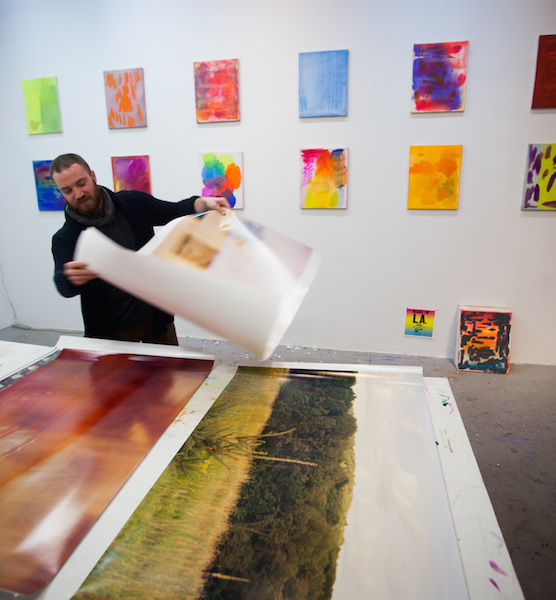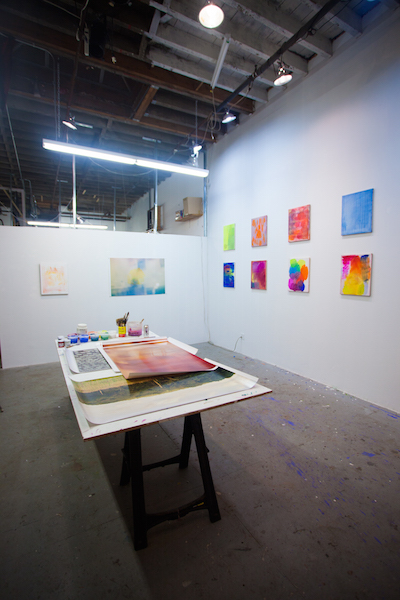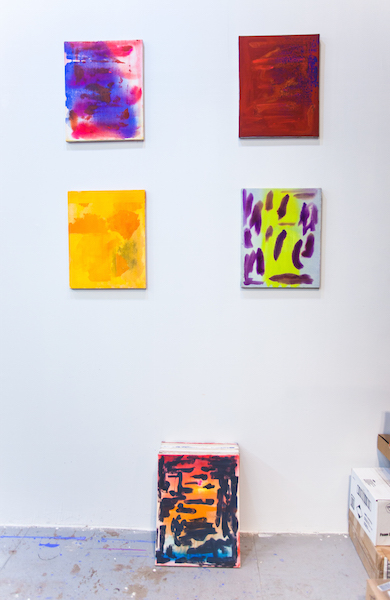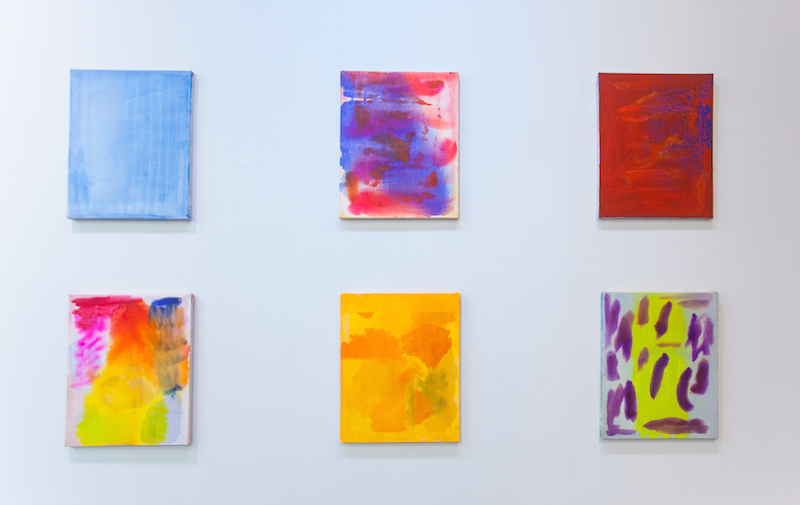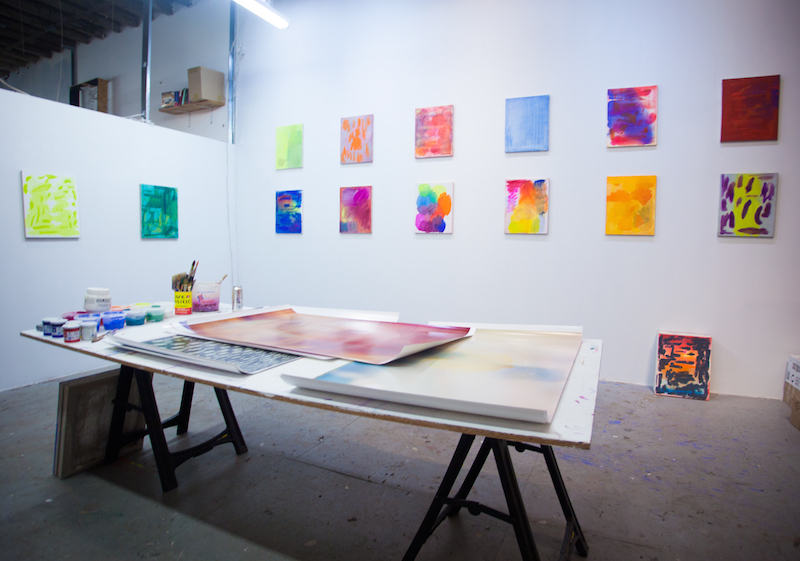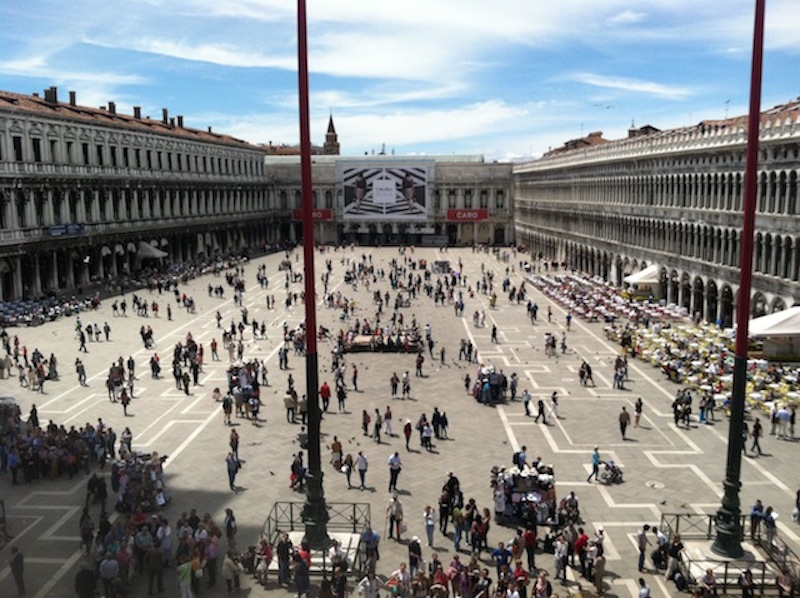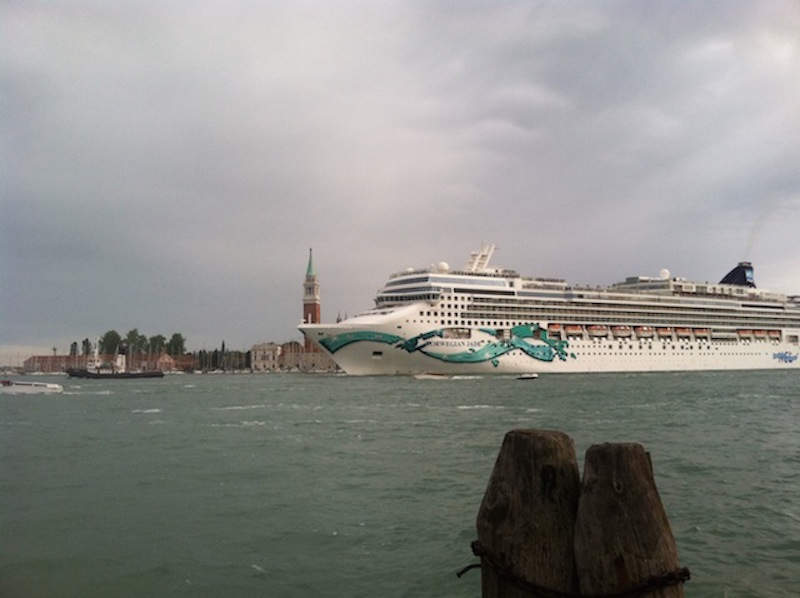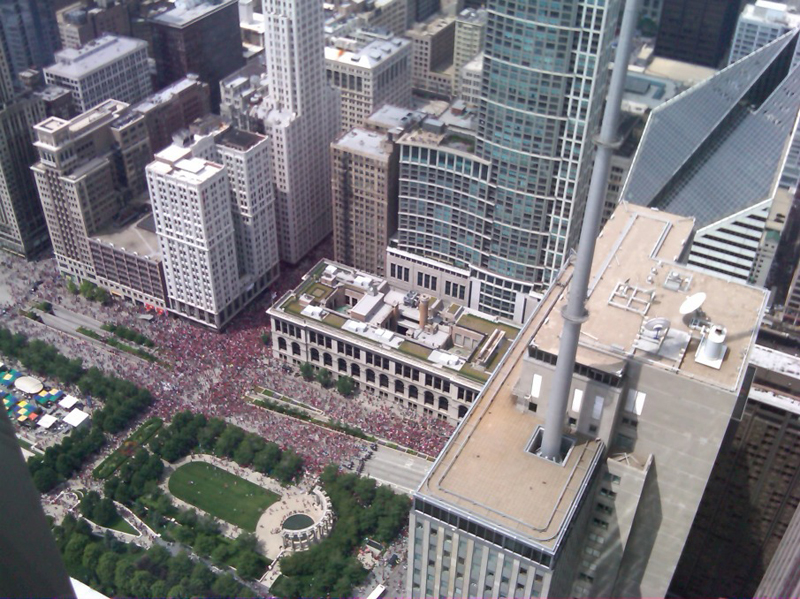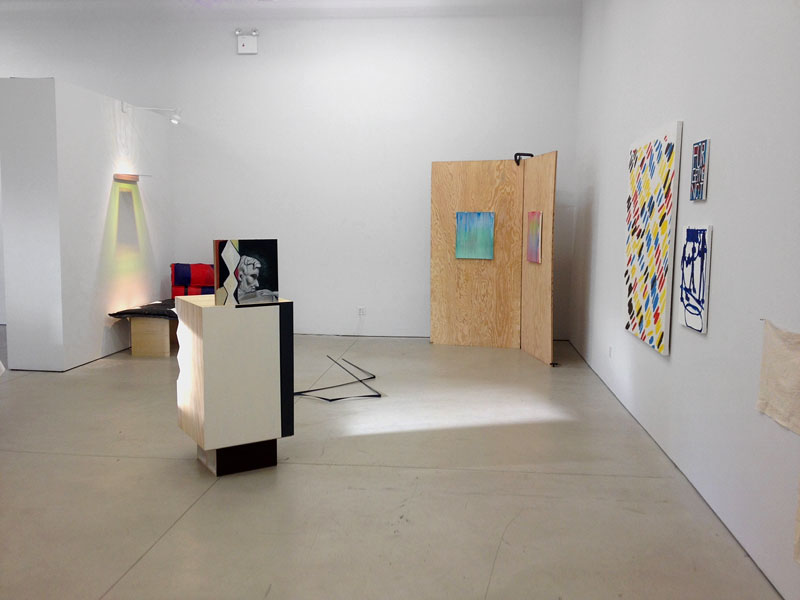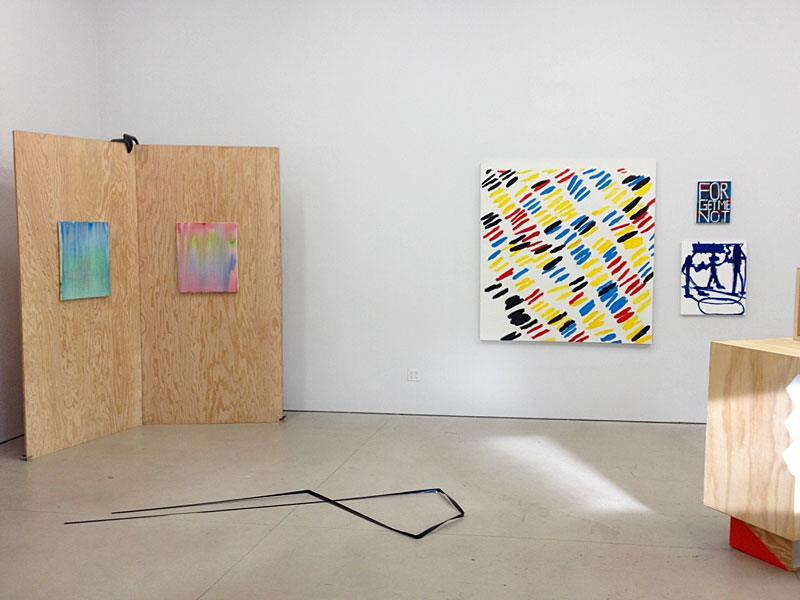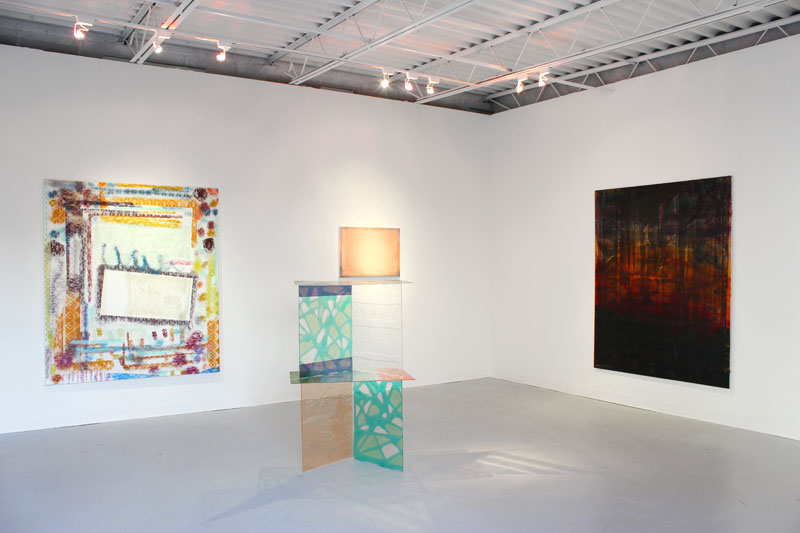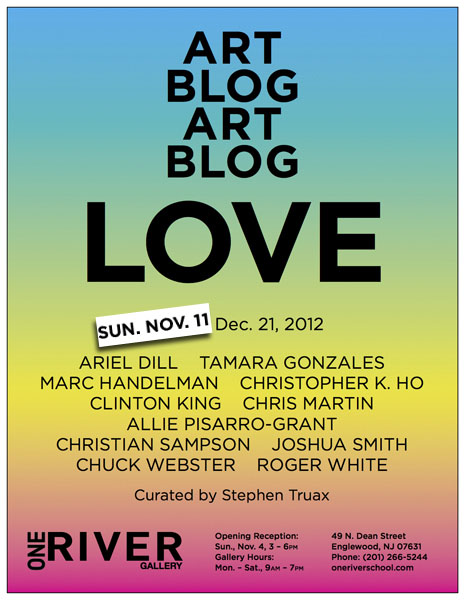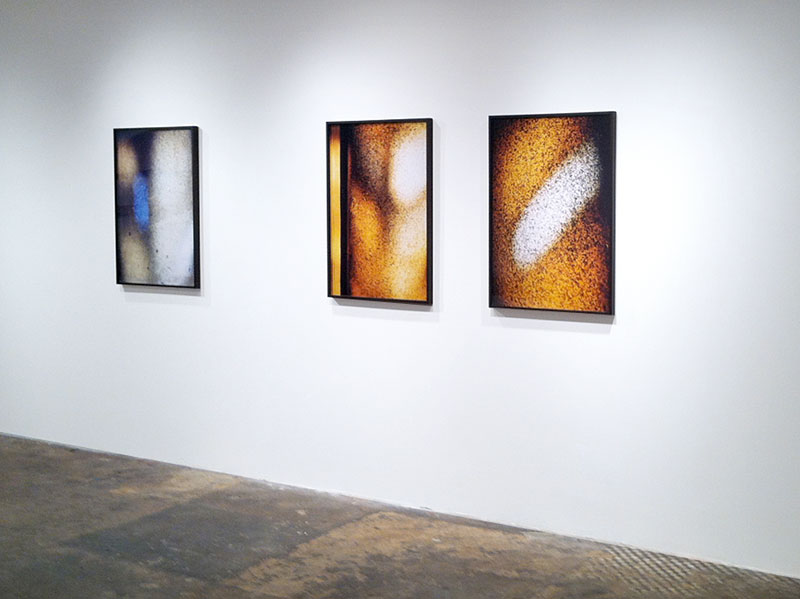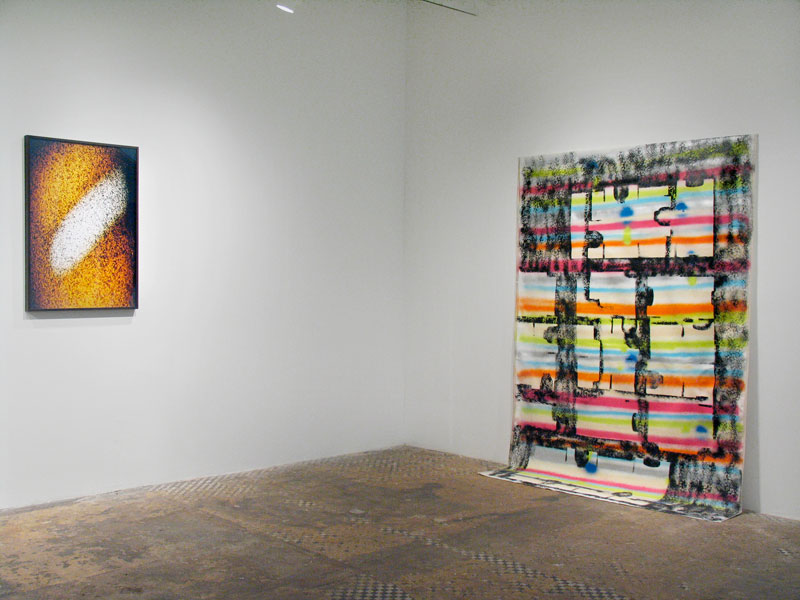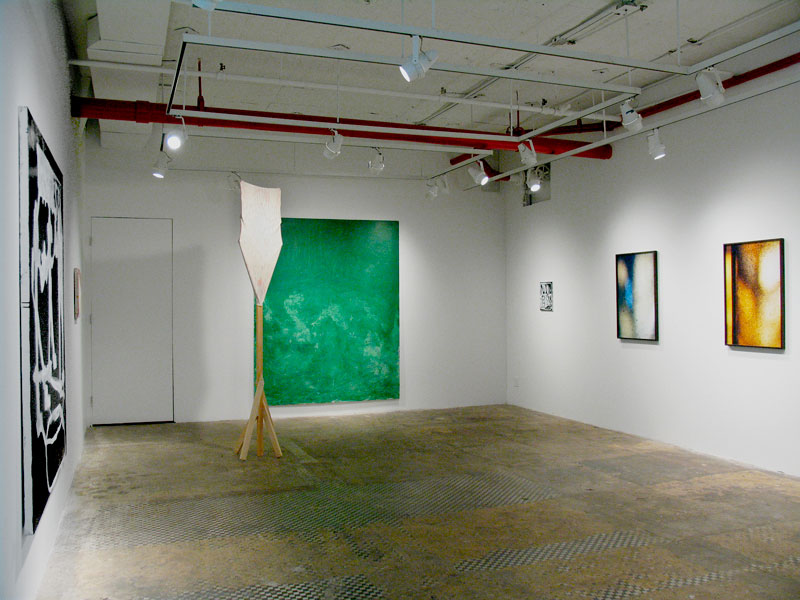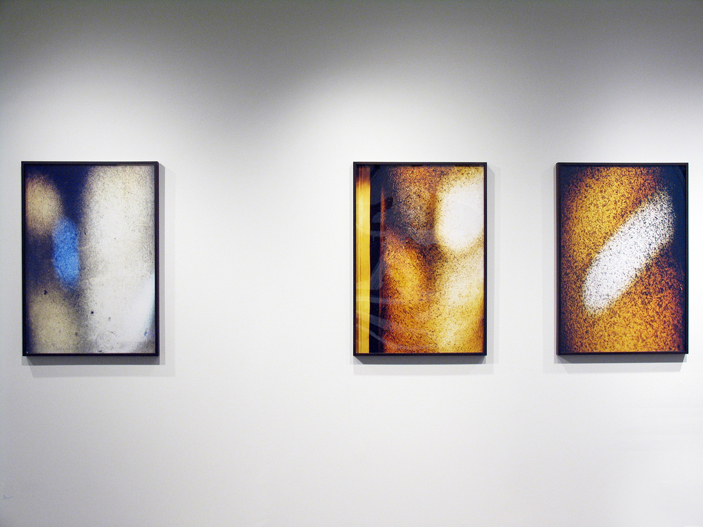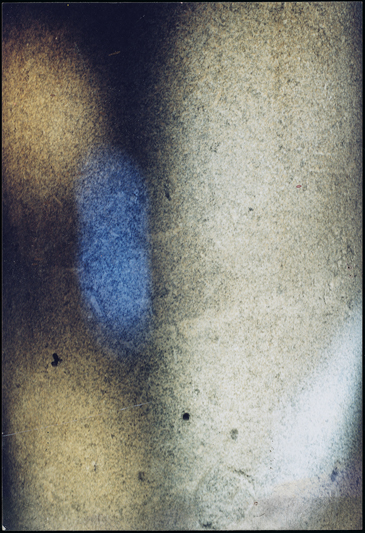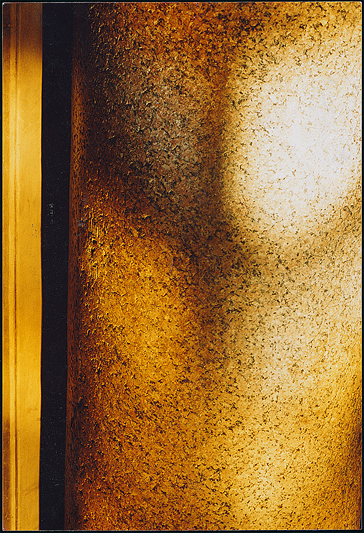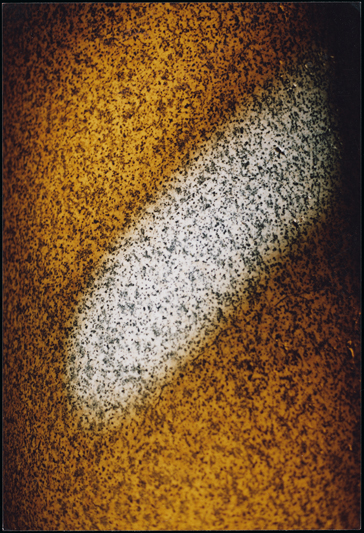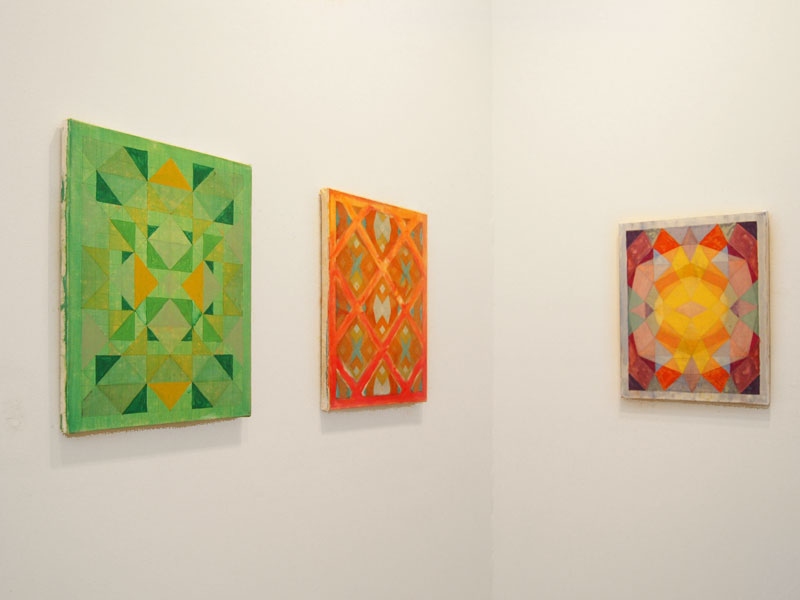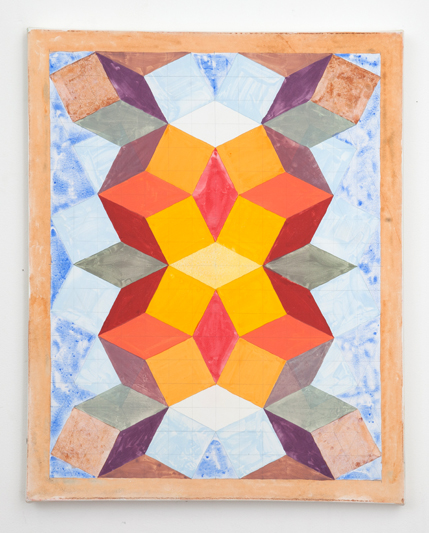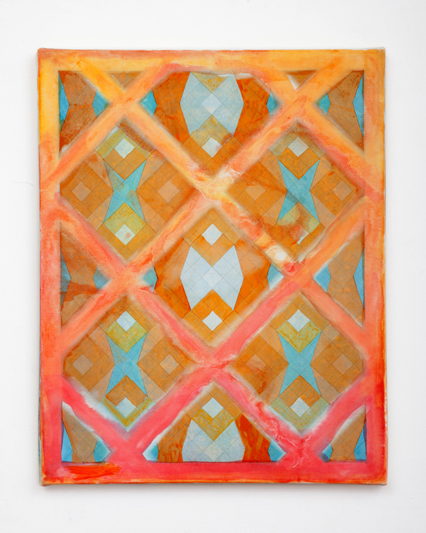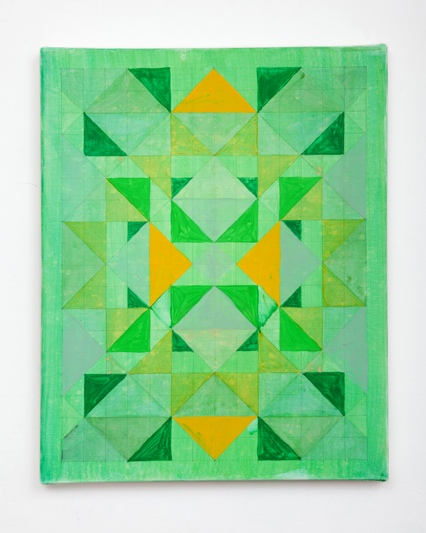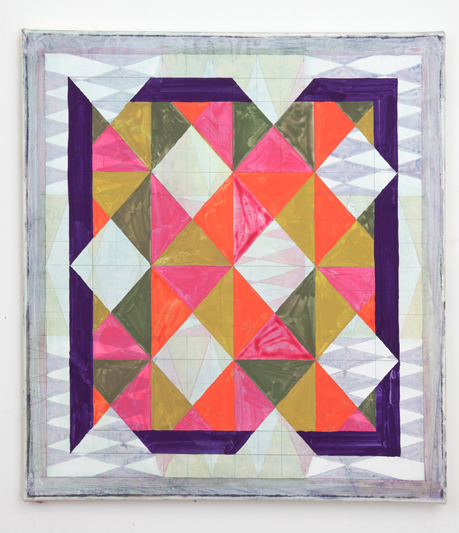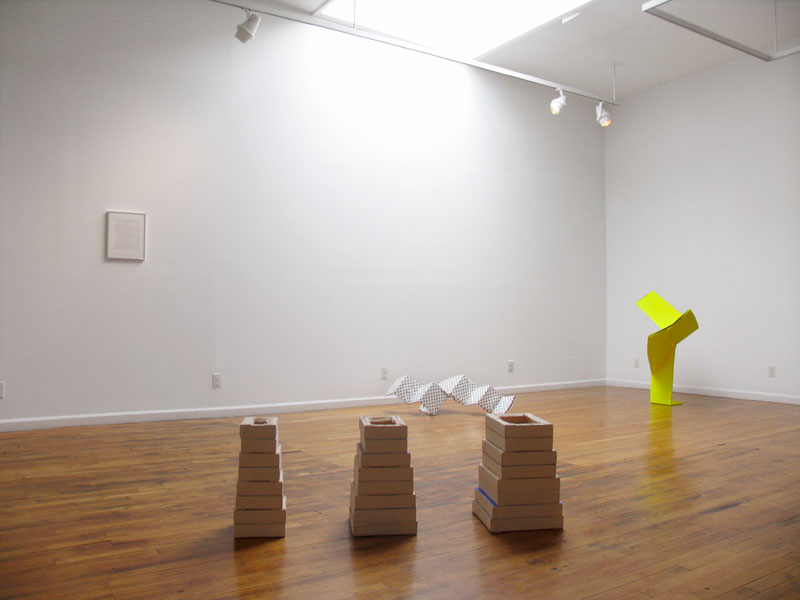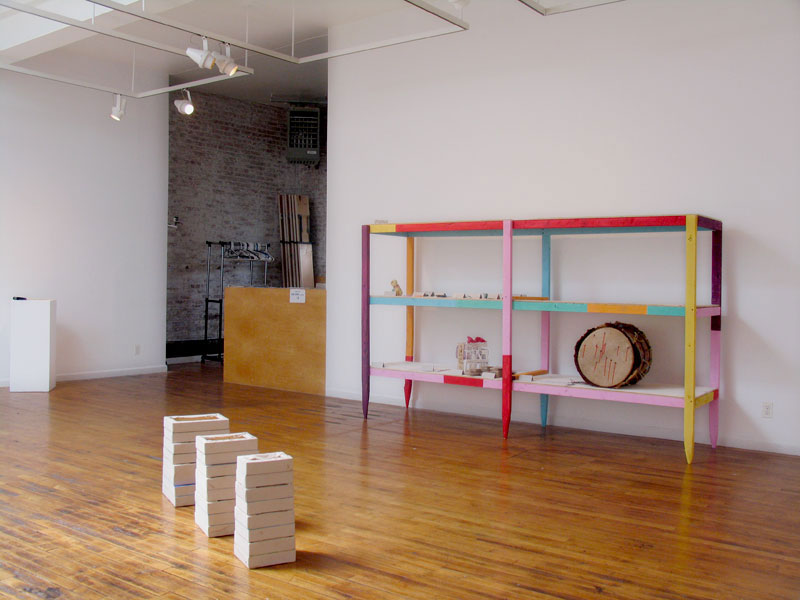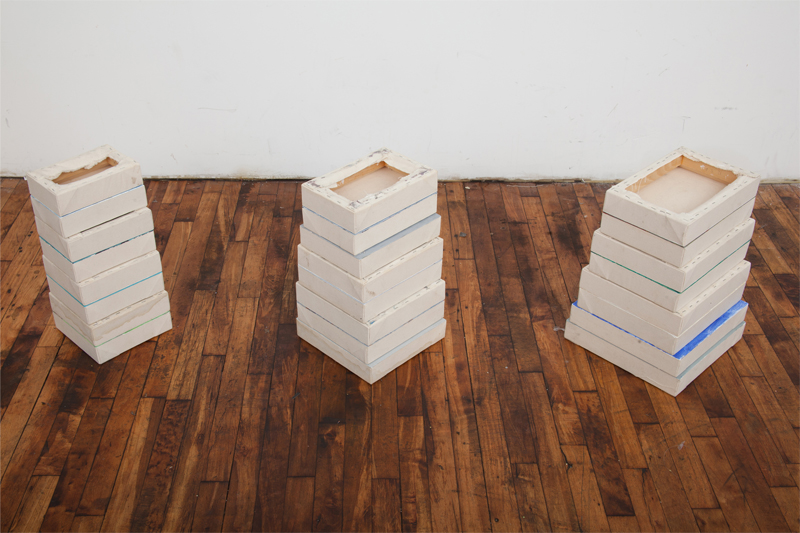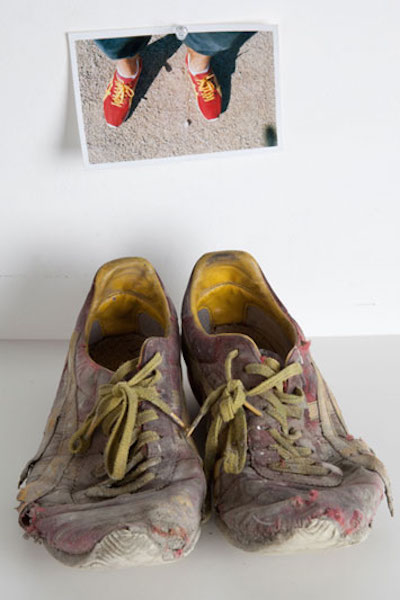Wish You Were Here at Ochi Projects, Sun Valley, ID, includes two gouache paintings (December 17, 2022 - January 28, 2023).
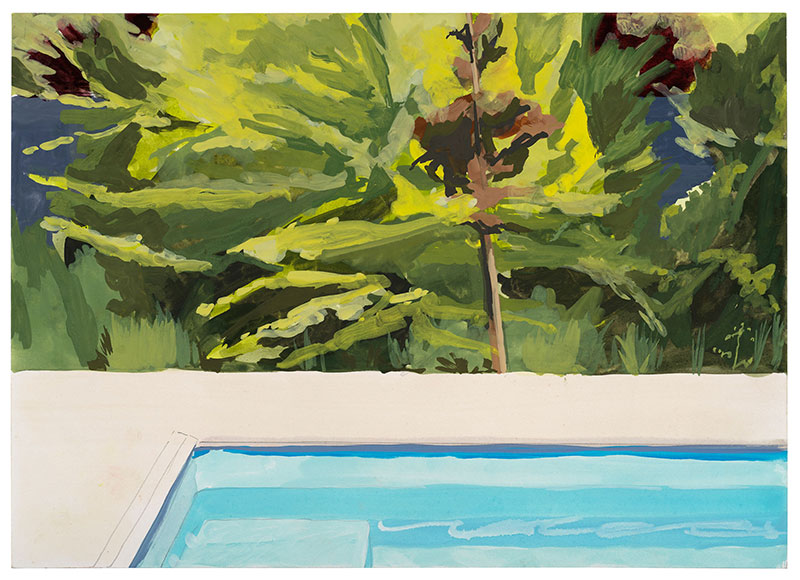
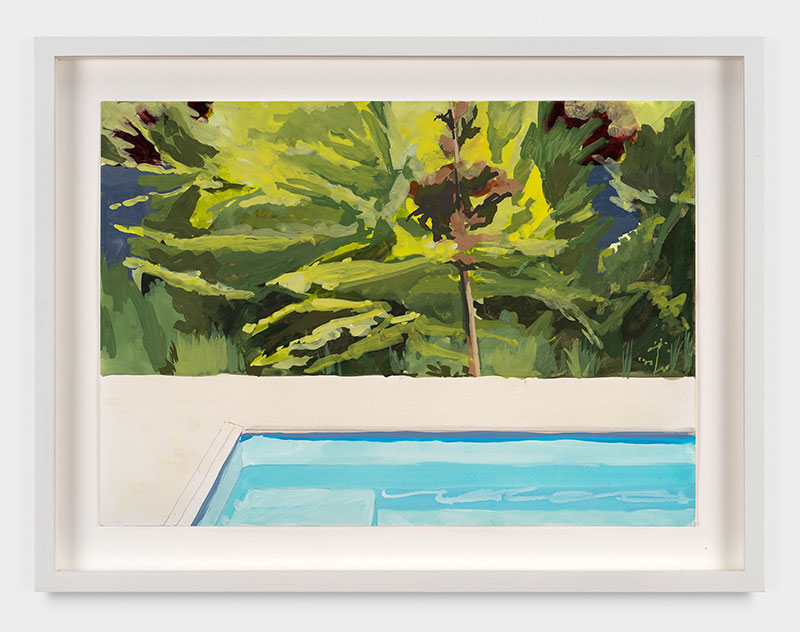
Stephen Truax, Ilan's Pool, 2022, Gouache on paper, 10 x 14 inches / Framed: 12 1/2 x 16 1/2 inches
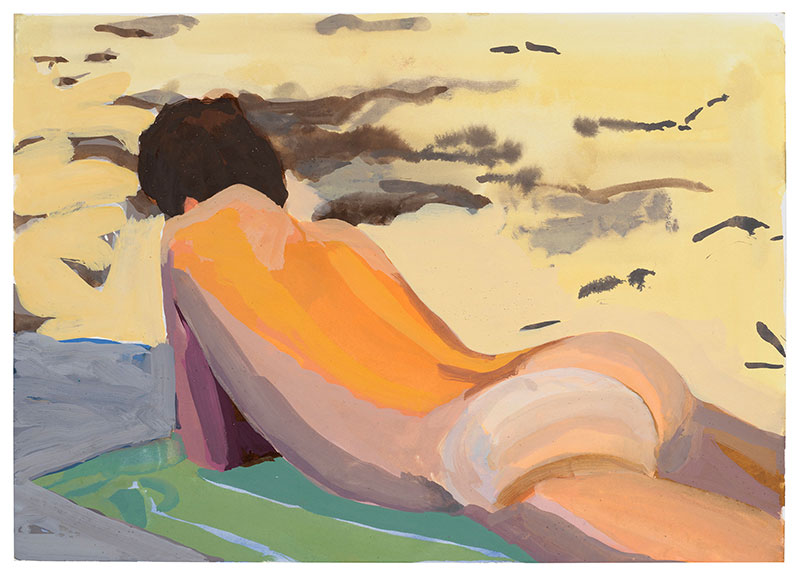
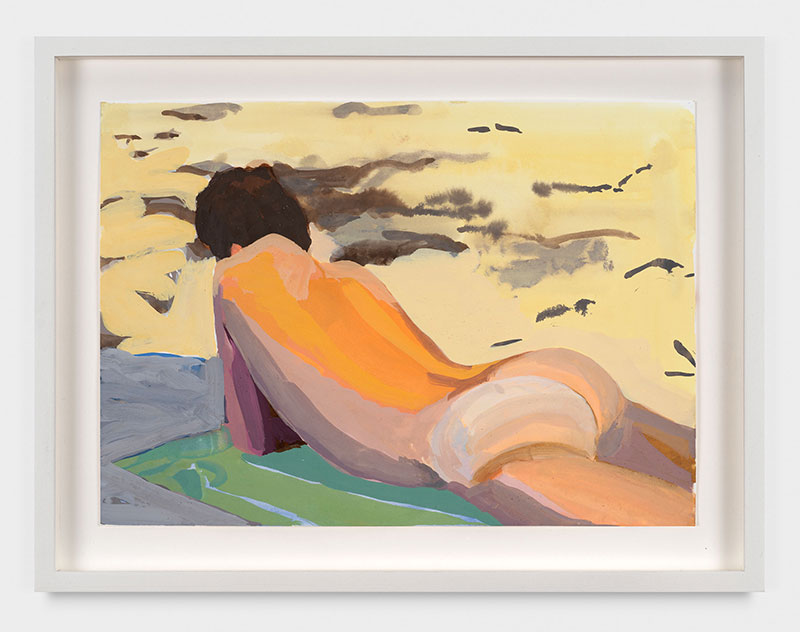
Stephen Truax, Thomas on a Green Towel (4), 2022, Gouache on paper, 10 x 14 inches / Framed: 12 1/2 x 16 1/2 inches
A Light That Swam Like Minnows, curated by Aaron Michael Skolnik, at Bill Arning Exhibitions, Kinderhook, NY, includes two gouache paintings (November 5 - December 16, 2022).
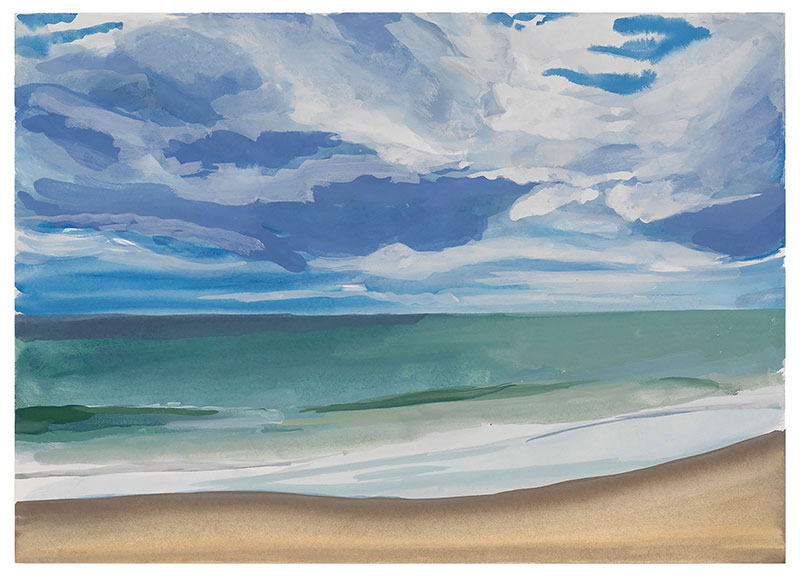
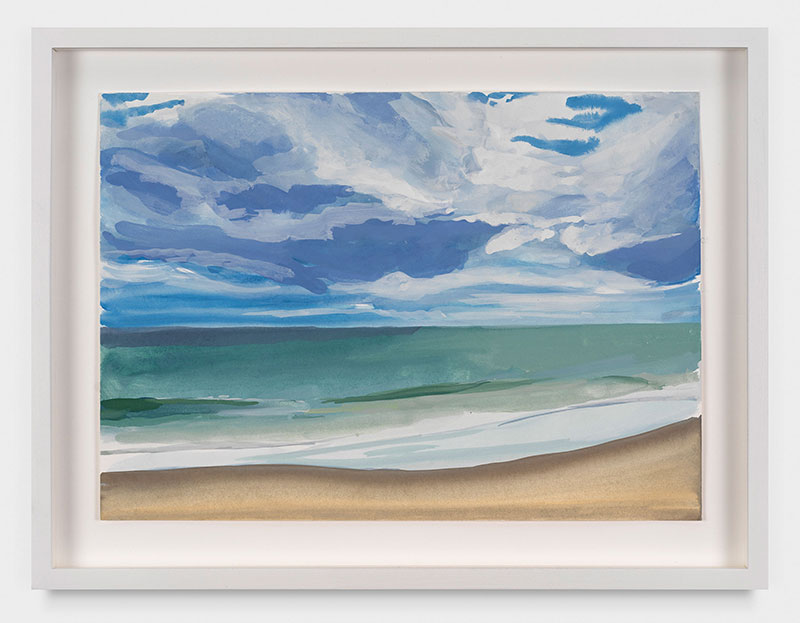
Stephen Truax, Fire Island 8-15-2022, 2022, Gouache on paper, 10 x 14 inches / Framed: 12 1/2 x 16 1/2 inches
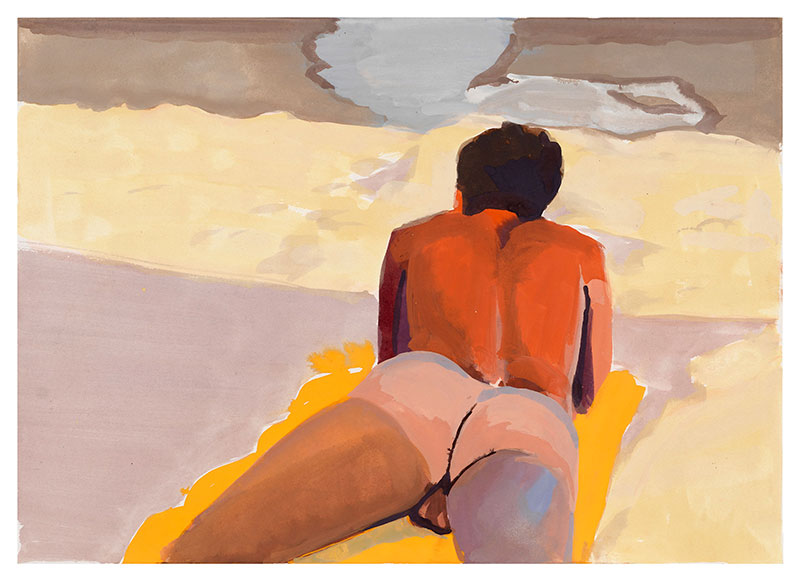
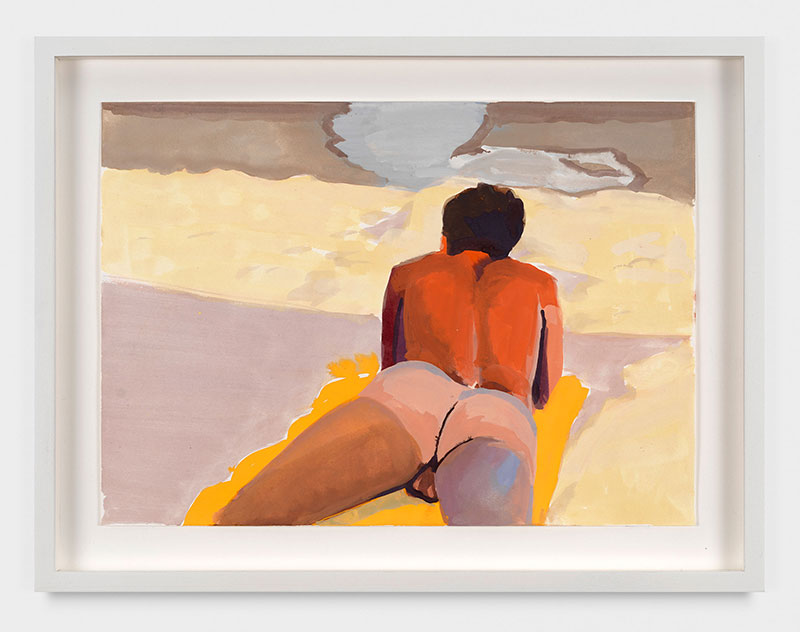
Stephen Truax, Thomas on a Yellow Towel, 2022, Gouache on paper, 10 x 14 inches / Framed: 12 1/2 x 16 1/2 inches
Any Distance Between Us, curated by Stephen Truax and Dominic Molon, at RISD Museum, Providence, RI, explores the power and significance of intimate relationships in works of contemporary art. Almost all of the thirty-five participating artists identify as queer and/or people of color. The exhibition's forty artworks, made from 1954 to 2021, are drawn from active artists' studios, private collections, and from the RISD Museum's permanent collection.
Together, they reflect a profound cultural and political shift over the last seventy-five years in representations of sexual orientation, gender identification, class, and race. Any distance between us draws poetic connections between works from disparate media (including paintings, drawings, photographs, sculpture, and prints), distinct historical moments, and different cultural contexts.
It includes works by Patrick Angus, Alvin Baltrop, Tom Burr, Katherine Bradford, Elliott Jerome Brown Jr., Paul Cadmus, Patrick Carroll, Kennedi Carter, Jonathan Lyndon Chase, TM Davy, Angela Dufresne, Jess T. Dugan, Nicole Eisenman, Louis Fratino, Aaron Gilbert, Nan Goldin, Felix Gonzalez-Torres, Christopher K. Ho, David Hockney, Sholem Krishtalka, Doron Langberg, Deana Lawson, Catherine Opie, Jack Pierson, Elle Pérez, Aurora Mattia, Robert Mapplethorpe, Sage Sohier, Hugh Steers, Wolfgang Tillmans, Tom of Finland, Salman Toor, Keith Vaughan, Andy Warhol, and David Wojnarowicz. (July 17, 2021 - March 13, 2022).
Together, they reflect a profound cultural and political shift over the last seventy-five years in representations of sexual orientation, gender identification, class, and race. Any distance between us draws poetic connections between works from disparate media (including paintings, drawings, photographs, sculpture, and prints), distinct historical moments, and different cultural contexts.
It includes works by Patrick Angus, Alvin Baltrop, Tom Burr, Katherine Bradford, Elliott Jerome Brown Jr., Paul Cadmus, Patrick Carroll, Kennedi Carter, Jonathan Lyndon Chase, TM Davy, Angela Dufresne, Jess T. Dugan, Nicole Eisenman, Louis Fratino, Aaron Gilbert, Nan Goldin, Felix Gonzalez-Torres, Christopher K. Ho, David Hockney, Sholem Krishtalka, Doron Langberg, Deana Lawson, Catherine Opie, Jack Pierson, Elle Pérez, Aurora Mattia, Robert Mapplethorpe, Sage Sohier, Hugh Steers, Wolfgang Tillmans, Tom of Finland, Salman Toor, Keith Vaughan, Andy Warhol, and David Wojnarowicz. (July 17, 2021 - March 13, 2022).
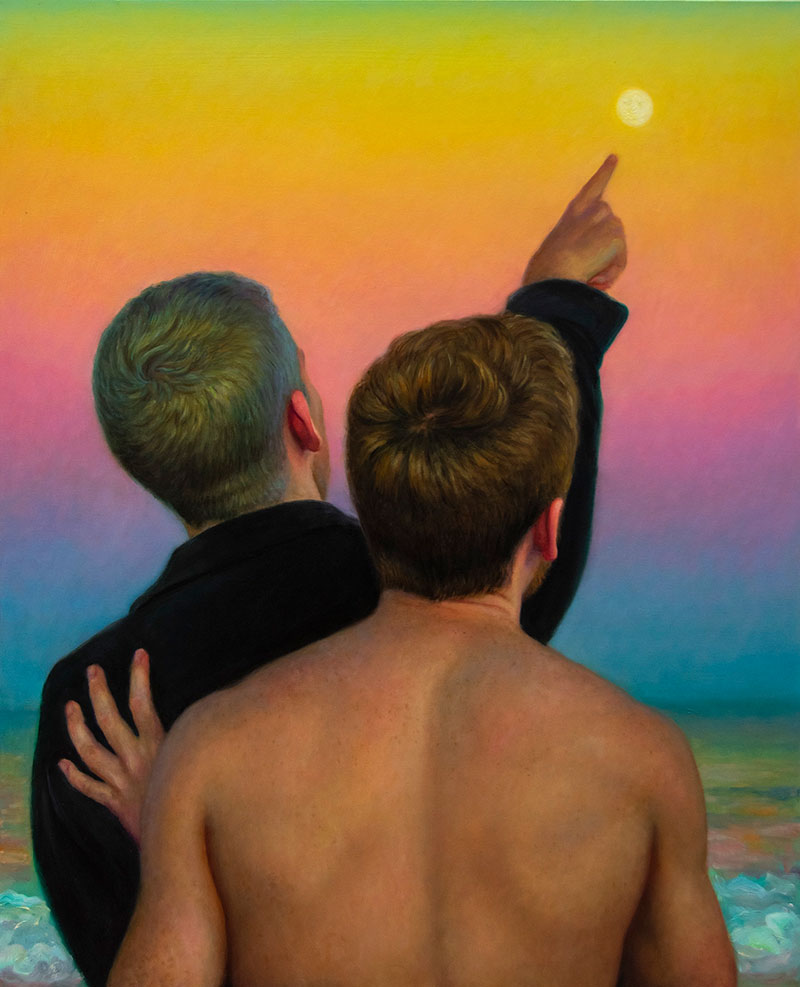
TM Davy, Planets by the Moon, 2021. Oil on canvas, 32 x 26 in. Courtesy of the artist and  Van Doren Waxter.
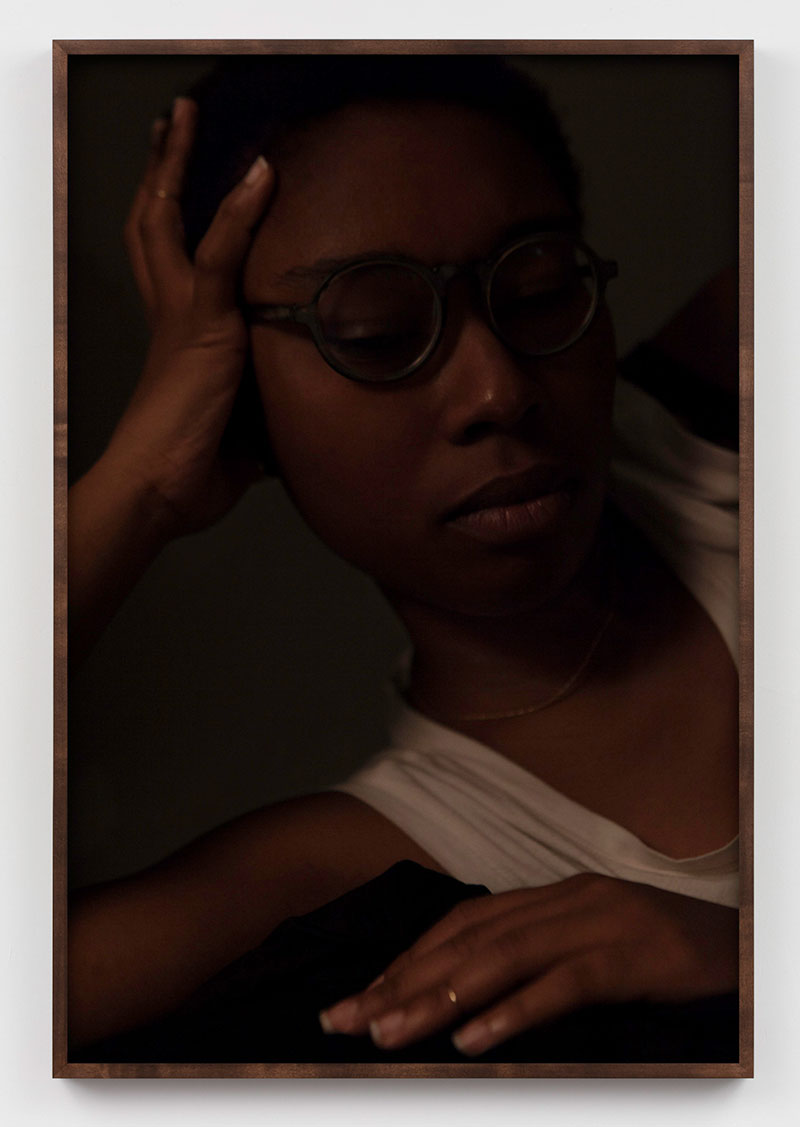
Elliott Jerome Brown, Jr., Syllables of joy and devastation (2), 2018. Courtesy of the artist and Nicelle Beauchene Gallery, New York.
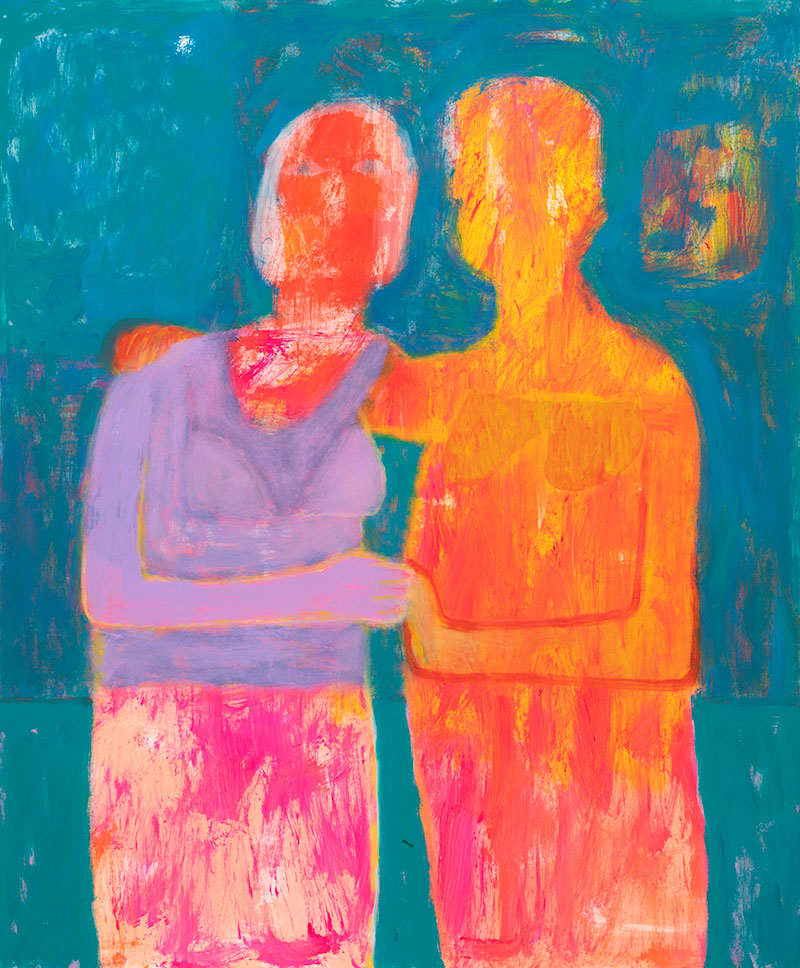
Katherine Bradford, Long Time Lovers, 2021. Courtesy of the artist and CANADA, New York. Photographer: Joe DeNardo.
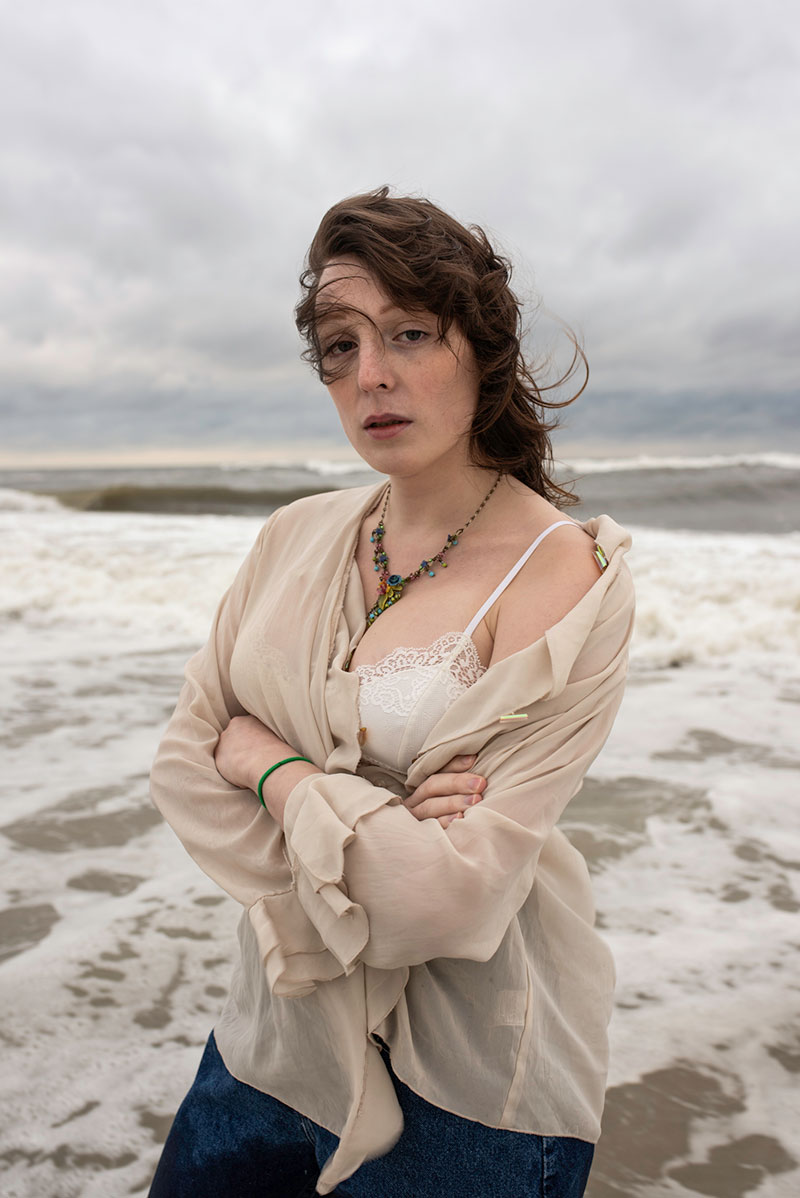
Elle Pérez, Mae at Riis, 2020. Elle Pérez, 47 Canal. Image courtesy of the artist and 47 Canal, New York.
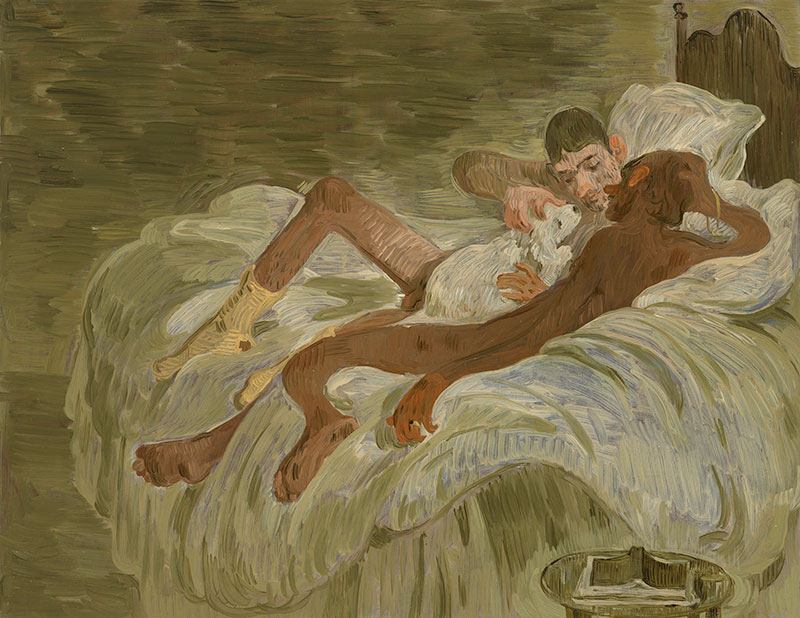
Salman Toor, Two Boys with a Dog, 2020. Museum purchase: gift of Avo Samuelian and Hector Manuel Gonzalez. RISD Museum, Providence. © Salman Toor; Courtesy of the artist and Luhring Augustine, New York.
Stephen Truax comments, "'What relationship is safe enough to make it the subject of one's work?' I asked in a review of Nicole Eisenman's 2016 exhibition at Anton Kern in New York. Since asking that question -- which is about being vulnerable -- my curatorial and artistic practice has driven me to visit the studios and write about other young, queer artists in New York City, many of whom are included in this show. I find their work to be tender and without irony, almost sentimental, and unapologetically beautiful -- all qualities I thought as a student at RISD were beyond the limits of contemporary art. Like Eisenman, these artists seemed to represent everything the New York art world could be but wasn't."
Truax adds, "Any distance between us expands on my 2018 curatorial project, Intimacy, which was presented at Yossi Milo Gallery in New York. That show, like this one, celebrated queer artists active today in context with a rough historical lineage of queer art from which their work emerged. This exhibition is enriched by pairing objects from the RISD Museum's broad collection with works being made right now, this year. In the wake of the AIDS crisis, young queer artists so often are cut off from historical predecessors like Alvin Baltrop, Patrick Angus, and Hugh Steers, who also turn inward to their lived experience and identity to make a powerful, political gesture. This exhibition of radical queer art made over the past three quarters of a century articulates this important and sometimes overlooked artistic movement, and visualizes that essential art-historical through-line of these humble, unassuming practices. My hope is that this show will embolden artists at RISD today to make work that is authentic and meaningful to them, fearlessly rooted in their everyday lives."
Dominic Molon states, "This exhibition -- and especially the acquisition of much of the work that comprises it -- demonstrates the RISD Museum's commitment to recognizing and celebrating the brave portrayal and documentation of affecting personal moments in the lives of people of color and the LGBTQIA+ community by artists of color and artists identifying as LGBTQIA+. Works by Elliott Jerome Brown Jr., Kennedi Carter, Jonathan Lyndon Chase, and Deana Lawson, for example, underscore the exhibition's emphasis on the importance of self-representation -- specifically of African Americans in the case of these four artists. The power of the romantic bond between two people is poetically addressed by Tom Burr, Elle Perez, Felix Gonzalez-Torres, and Salman Toor, among others. Any distance between us also provides an opportunity for reflection on a year defined by the solitude or compulsory closeness of the COVID lockdowns."
Truax adds, "Any distance between us expands on my 2018 curatorial project, Intimacy, which was presented at Yossi Milo Gallery in New York. That show, like this one, celebrated queer artists active today in context with a rough historical lineage of queer art from which their work emerged. This exhibition is enriched by pairing objects from the RISD Museum's broad collection with works being made right now, this year. In the wake of the AIDS crisis, young queer artists so often are cut off from historical predecessors like Alvin Baltrop, Patrick Angus, and Hugh Steers, who also turn inward to their lived experience and identity to make a powerful, political gesture. This exhibition of radical queer art made over the past three quarters of a century articulates this important and sometimes overlooked artistic movement, and visualizes that essential art-historical through-line of these humble, unassuming practices. My hope is that this show will embolden artists at RISD today to make work that is authentic and meaningful to them, fearlessly rooted in their everyday lives."
Dominic Molon states, "This exhibition -- and especially the acquisition of much of the work that comprises it -- demonstrates the RISD Museum's commitment to recognizing and celebrating the brave portrayal and documentation of affecting personal moments in the lives of people of color and the LGBTQIA+ community by artists of color and artists identifying as LGBTQIA+. Works by Elliott Jerome Brown Jr., Kennedi Carter, Jonathan Lyndon Chase, and Deana Lawson, for example, underscore the exhibition's emphasis on the importance of self-representation -- specifically of African Americans in the case of these four artists. The power of the romantic bond between two people is poetically addressed by Tom Burr, Elle Perez, Felix Gonzalez-Torres, and Salman Toor, among others. Any distance between us also provides an opportunity for reflection on a year defined by the solitude or compulsory closeness of the COVID lockdowns."
You Got Your Secret On, curated by Aaron Michael Skolnik, at Quappi Projects, Louisville, KY, includes a group of gouache landscape paintings. (June 25 - September, 2021).
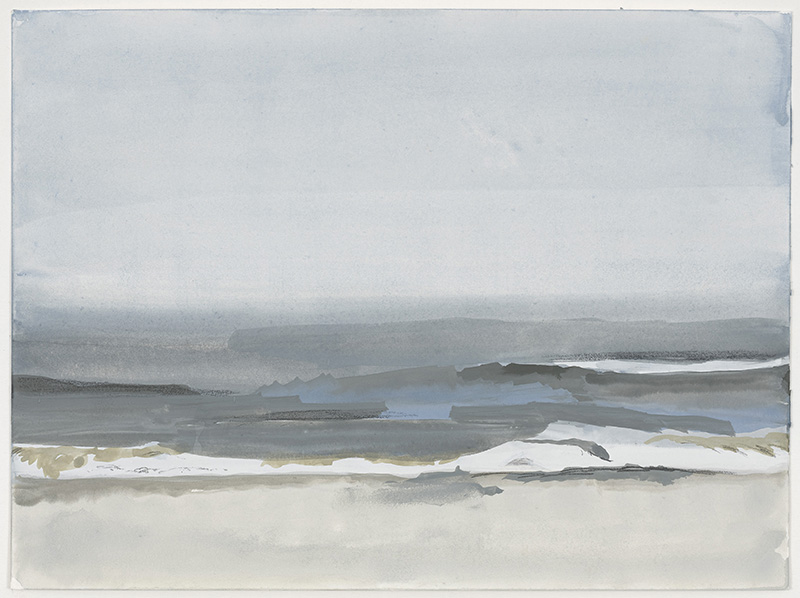
Stephen Truax, Oceanfront Property (Fire Island 6), 2020, Gouache on paper, 9 x 12 inches / Framed: 11 1/2 x 14 1/2 inches
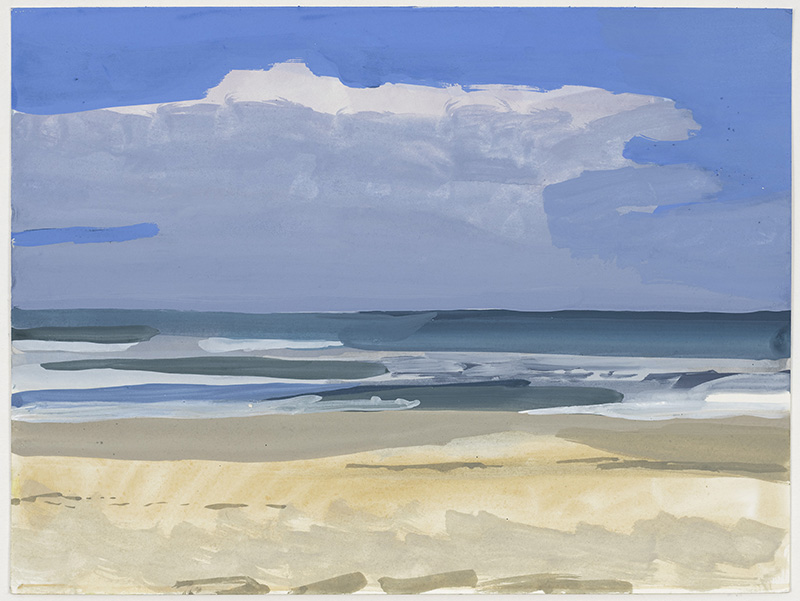
Stephen Truax, Oceanfront Property (Fire Island 7), 2020, Gouache on paper, 9 x 12 inches / Framed: 11 1/2 x 14 1/2 inches
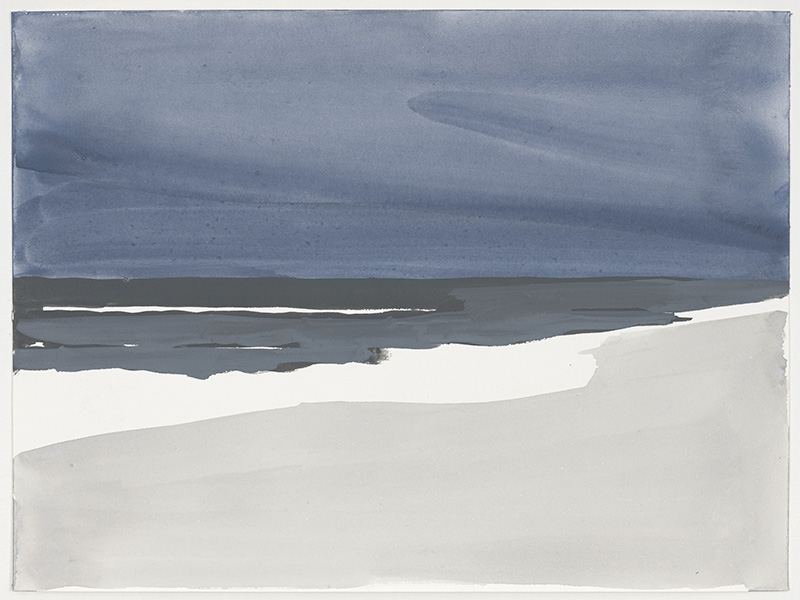
Stephen Truax, Oceanfront Property (Fire Island 8), 2020, Gouache on paper, 9 x 12 inches / Framed: 11 1/2 x 14 1/2 inches
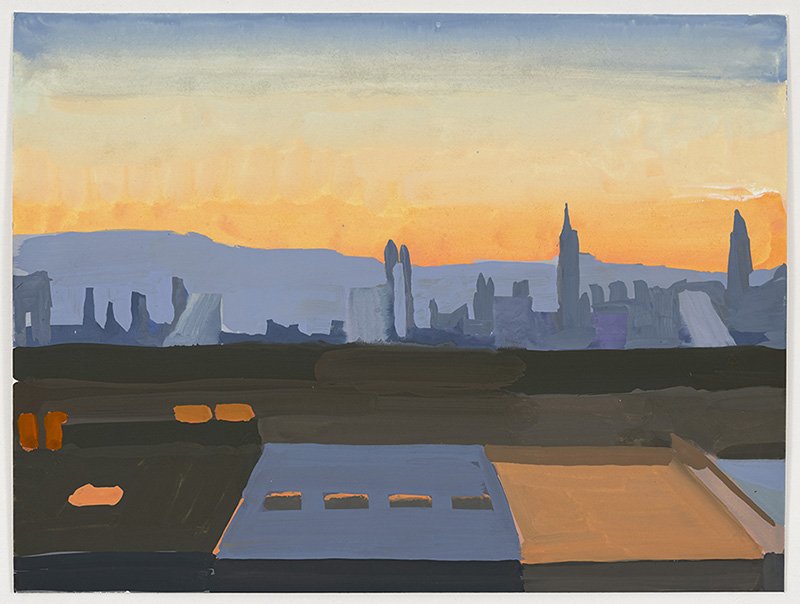
Stephen Truax, Oceanfront Property (Brooklyn Rooftop), 2020, Gouache on paper, 9 x 12 inches / Framed: 11 1/2 x 14 1/2 inches
"The Marks Men Leave," a second-person narrative text, is included in the book, You & i are Earth, edited by Fergus Feehily, published by Paper Visual Art, Berlin/Dublin. (March 2020)
You can walk through these spaces and often not find anyone. But there is a lingering sensation that someone is there. Recent footprints run through sandy trails. They link together through the pitch pine shrubland in the configuration of two interlocking figure eights. Two open areas cap these enclosures, and deeper into the woods the paths extend in a less formal way. Men draw these trails daily, cruising for anonymous sexual encounters. Foot traffic made visible by continuous use -- these are desire lines.
Inside the enclosure, the canopy forms a dome overhead. The walls are thickets of gently curving branches of shadblow trees. Older hardwoods are central elements around which the spaces are organised. The long, knotted roots extend out at knee-height like decorative column bases. They crisscross the pathways to form stairs. Some trees dislodged from the side of the dune expose their white root systems and arc up into sculptural form.
Mostly everyone thinks it's an old tradition killed off by police enforcement and the convenience of gay hook-up apps. But there are still signifiers of the activity at hand throughout the brush: wadded tissues, condom wrappers, beer cans, cigarette butts. Someone has hung up a plastic grocery bag from one of the trees. There are several wide roots men have sat upon like benches. The clarity of the footpaths is the result of certain plants removed, dead trees and roots destroyed to make way. Everything else remains as it would be without human intervention.
Secluded on a slight elevation away from regular pedestrians, you'll find this area on a certain stretch of land between the Pines and Cherry Grove. It is a federally protected nature reserve on Fire Island, New York, and has been in use since the 1950s. How did this completely natural site, known colloquially as the Meat meat Rack, become a centre of queer social life for over six decades?
On the low side of the hill, there is a winding trail along an open swamp from which grows bamboo. On the high side, there is a wide avenue of white sand called the Judy Garland Memorial Path. Straight couples and children amble along the path, unaware of what transpires nearby. Men are protected by the shade of trees, the walls of the underbrush, a shield of plants and leaves.
A presence hovers nearby, like the feeling of being watched or pursued. You glance back over your shoulder. The rustle of a grey catbird shuffling through dead leaves on the forest floor startles you. A garter snake recoils in the dune grass from the vibration of your feet. The mosquitos are especially bad after the rain. Leaves move in the wind. The sound of voices emanate from the beach or up from the path below. It could be someone approaching. Deer graze here with their fawns, browsing on muscular leaves.
But circling back through the familiar pathways, you confirm no one is there.
Other times, it's crowded with men; too many to make sense of. Even rowdy groups pass through issuing unwelcome noise in the otherwise sacrosanct silence. Perhaps, one early morning you run into a married man. He is in his forties, his rose gold band bright on his ring finger. He is spread-eagled up against a tree. Two young men stand close behind him. One has his back to you, stark naked and still, looking out, as does the man in Frédéric Bazille's 1868 painting The Fisherman with a Net. Nothing more beautiful than skin illuminated by dappled light against a blue-green backdrop of trees. Some liquid drops into the dirt of the forest floor with a quiet grunt and a sigh. All of the evidence of the encounter is made almost immediately invisible. The sand on the ground covered in footprints swallows it.
The impossible complexity of the pine woods snaps into crisp focus. Each leaf with its six spines in glossy green; each elegant coniferous branch cranes out into space. The outer edge of rotating spiral trunks of a group of thirty or more trees blaze yellow in the setting sun. Abstract shapes of sky appear, framed by transparent overlapping leaves. Waning orange rakes through the leaves and needles studded with pinecones. Deep greens and ashen branches are radiant color. At certain places, the vista opens up like a surprise. From the forest, the sea is visible in the distance under the pale, almost white blue sky dotted with pink clouds.
Inside the enclosure, the canopy forms a dome overhead. The walls are thickets of gently curving branches of shadblow trees. Older hardwoods are central elements around which the spaces are organised. The long, knotted roots extend out at knee-height like decorative column bases. They crisscross the pathways to form stairs. Some trees dislodged from the side of the dune expose their white root systems and arc up into sculptural form.
Mostly everyone thinks it's an old tradition killed off by police enforcement and the convenience of gay hook-up apps. But there are still signifiers of the activity at hand throughout the brush: wadded tissues, condom wrappers, beer cans, cigarette butts. Someone has hung up a plastic grocery bag from one of the trees. There are several wide roots men have sat upon like benches. The clarity of the footpaths is the result of certain plants removed, dead trees and roots destroyed to make way. Everything else remains as it would be without human intervention.
Secluded on a slight elevation away from regular pedestrians, you'll find this area on a certain stretch of land between the Pines and Cherry Grove. It is a federally protected nature reserve on Fire Island, New York, and has been in use since the 1950s. How did this completely natural site, known colloquially as the Meat meat Rack, become a centre of queer social life for over six decades?
On the low side of the hill, there is a winding trail along an open swamp from which grows bamboo. On the high side, there is a wide avenue of white sand called the Judy Garland Memorial Path. Straight couples and children amble along the path, unaware of what transpires nearby. Men are protected by the shade of trees, the walls of the underbrush, a shield of plants and leaves.
A presence hovers nearby, like the feeling of being watched or pursued. You glance back over your shoulder. The rustle of a grey catbird shuffling through dead leaves on the forest floor startles you. A garter snake recoils in the dune grass from the vibration of your feet. The mosquitos are especially bad after the rain. Leaves move in the wind. The sound of voices emanate from the beach or up from the path below. It could be someone approaching. Deer graze here with their fawns, browsing on muscular leaves.
But circling back through the familiar pathways, you confirm no one is there.
Other times, it's crowded with men; too many to make sense of. Even rowdy groups pass through issuing unwelcome noise in the otherwise sacrosanct silence. Perhaps, one early morning you run into a married man. He is in his forties, his rose gold band bright on his ring finger. He is spread-eagled up against a tree. Two young men stand close behind him. One has his back to you, stark naked and still, looking out, as does the man in Frédéric Bazille's 1868 painting The Fisherman with a Net. Nothing more beautiful than skin illuminated by dappled light against a blue-green backdrop of trees. Some liquid drops into the dirt of the forest floor with a quiet grunt and a sigh. All of the evidence of the encounter is made almost immediately invisible. The sand on the ground covered in footprints swallows it.
The impossible complexity of the pine woods snaps into crisp focus. Each leaf with its six spines in glossy green; each elegant coniferous branch cranes out into space. The outer edge of rotating spiral trunks of a group of thirty or more trees blaze yellow in the setting sun. Abstract shapes of sky appear, framed by transparent overlapping leaves. Waning orange rakes through the leaves and needles studded with pinecones. Deep greens and ashen branches are radiant color. At certain places, the vista opens up like a surprise. From the forest, the sea is visible in the distance under the pale, almost white blue sky dotted with pink clouds.
A gouache landscape painting is included in The Many Faces of Bill Arning, an exhibition to celebrate the curator's sixtieth birthday, at Andrew Edlin Gallery, New York. (July 22 - August 28, 2020).
A handmade quilt collaboration between Debra Truax, the artist's mother, and Stephen Truax, and a plein-air gouache painting were included in Dynasty, curated by Christopher K. Ho and Sara Reisman, at PS 122 Gallery, New York. (October 25 - December 1, 2019)
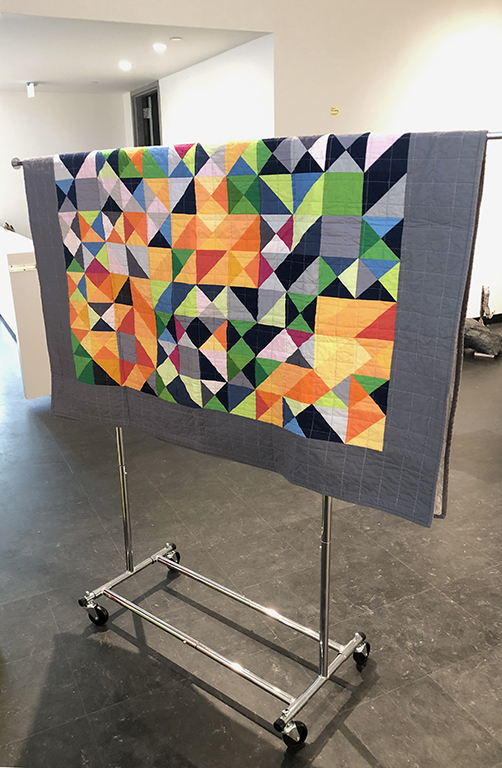
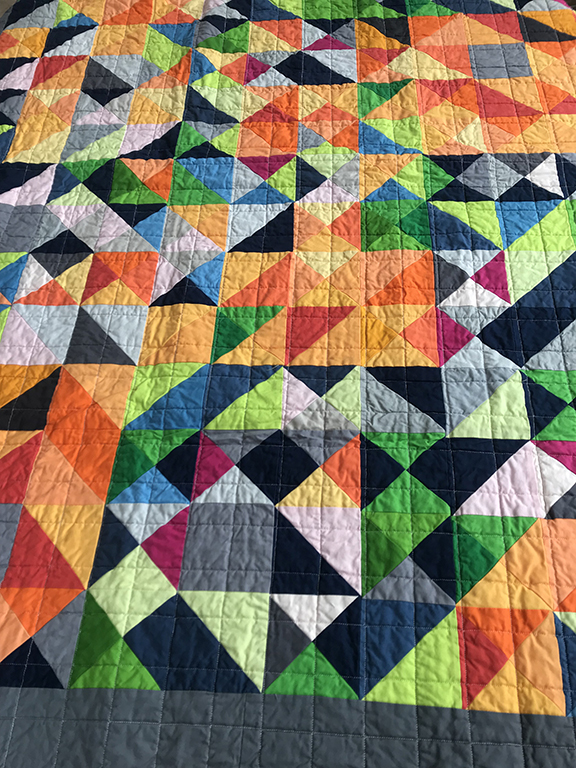
Debra Truax & Stephen Truax, Quilt Painting (Landscape), 2019, Cotton, 50 x 60 inches / 127 x 152.4 cm
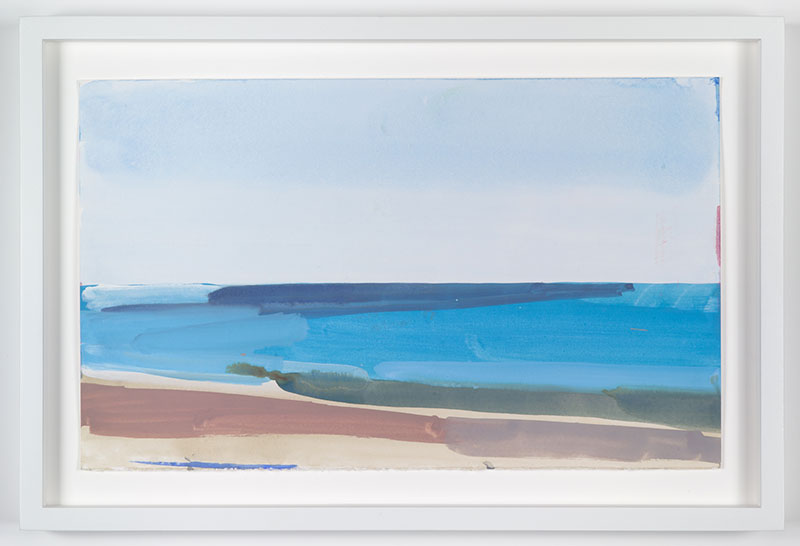
Stephen Truax, Oceanfront Property (Floriday Day 3), 2018, Gouache on paper, 8 1/2 x 14 inches / 21.59 x 35.56 cm
An unfinished plein-air gouache was included in Notebook, organized by the artist Joanne Greenbaum at 56 Henry, New York. The exhibition was reviewed in ARTFORUM. (February 9 - March 31, 2019)
Two gouache landscape paintings were included in The Emoji Show at Klaus von Nichtssagend, New York. The exhibition was reviewed in The New York Times. (July - August 2018)
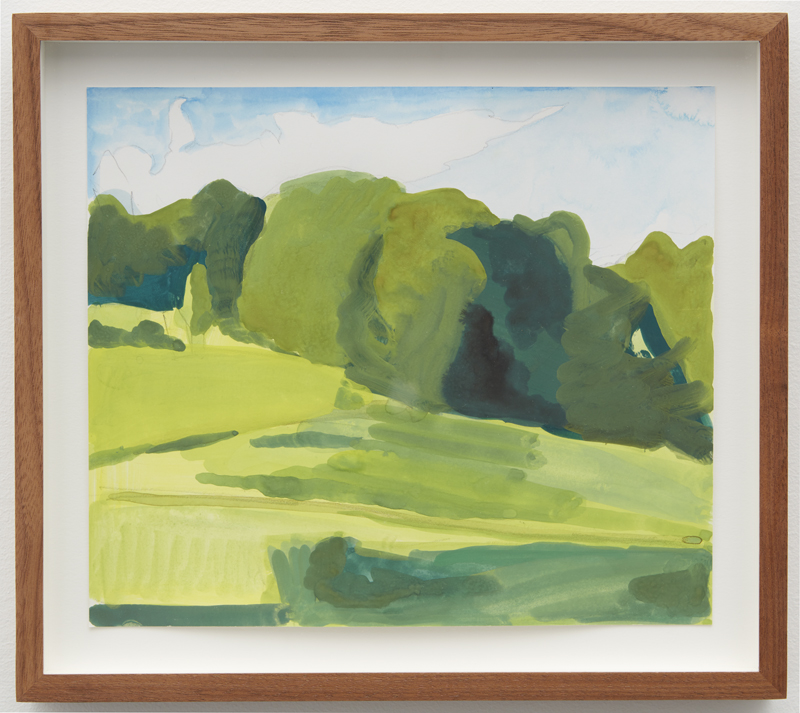
Stephen Truax, Upstate Property (Bright Day 2), 2017, Gouache on paper, 9 1/2 x 12 inches / 24.13 x 30.48 cm
Intimacy (June - August 2018), curated by Stephen Truax, at Yossi Milo Gallery, New York, traces predominantly LGBTQ-identified relationships in contemporary art over the past forty years. The exhibition includes the work of nearly forty artists and estates: Patrick Angus, Lyle Ashton Harris, Katherine Bradford, Elliott Jerome Brown, Jr., Elijah Burgher, Paul Cadmus, TM Davy, John Dugdale, George Dureau, Nicole Eisenman, Louis Fratino, Nan Goldin, Katy Grannan, EJ Hauser, Christopher K. Ho, Peter Hujar, Stephen Irwin, Bill Jacobson, Kristen Jensen, Sholem Krishtalka, Kia LaBeija, Doron Langberg, Kristina Matousch, Robert Mapplethorpe, McDermott & McGough, Samantha Nye, Elle Pérez, Jack Pierson, Bryson Rand, Paul Mpagi Sepuya, Michael Stamm, Hugh Steers, Richard Renaldi, Wolfgang Tillmans, Jesse Wine, David Wojnarowicz, and Kohei Yoshiyuki. The exhibition ran from June 28 through August 24, 2018.
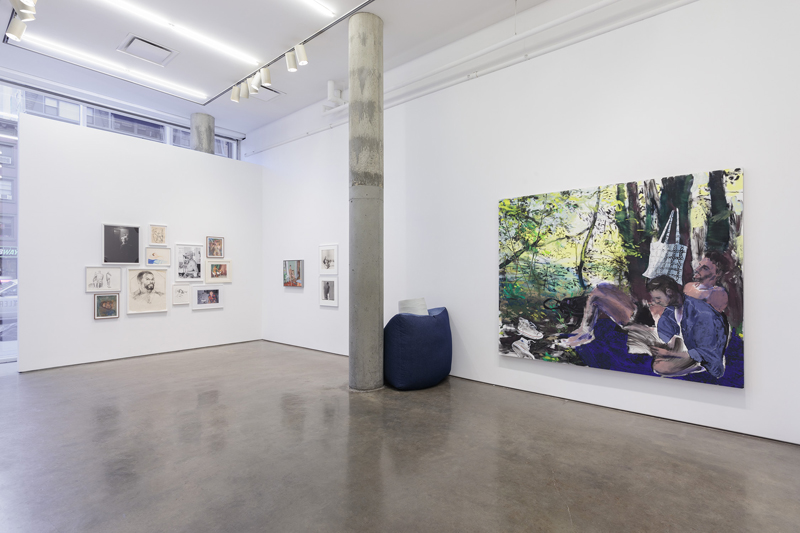
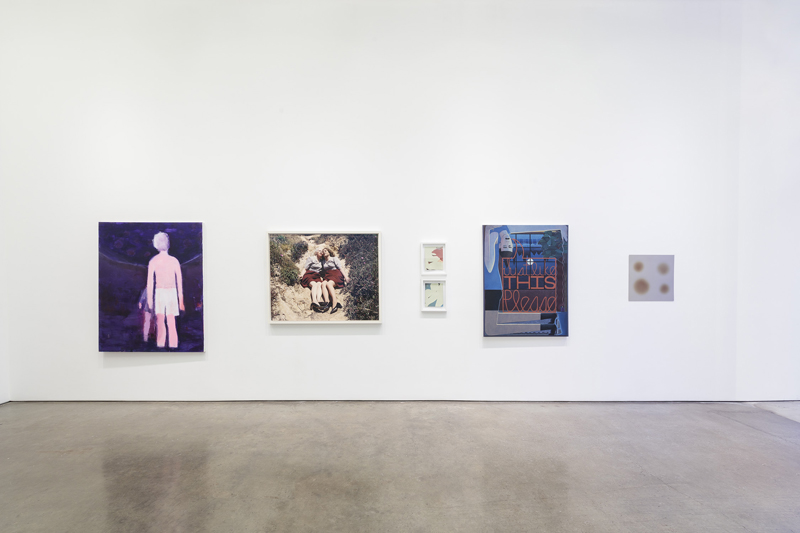
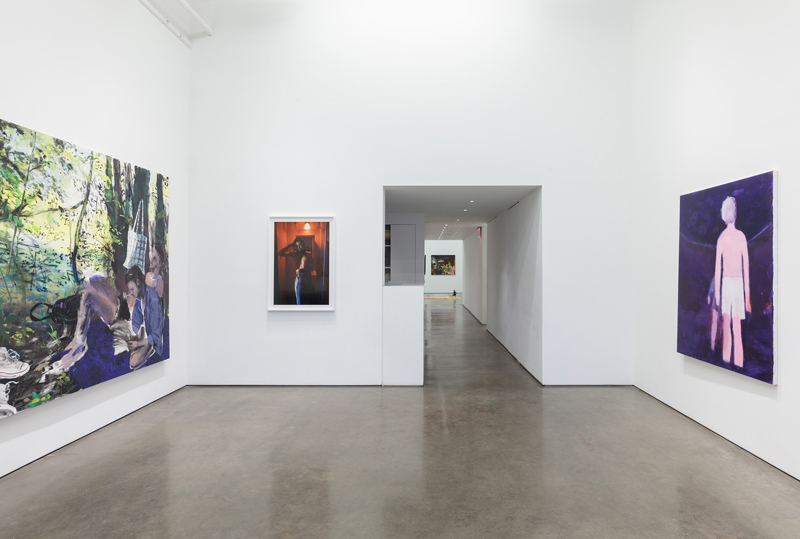
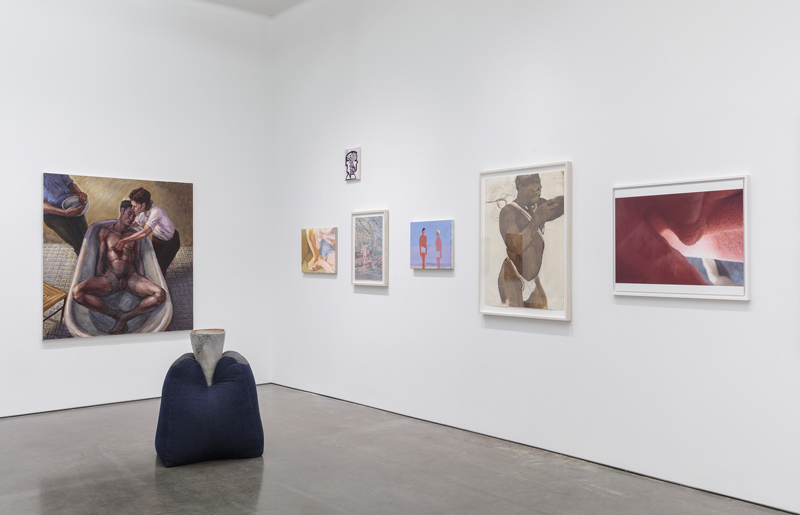
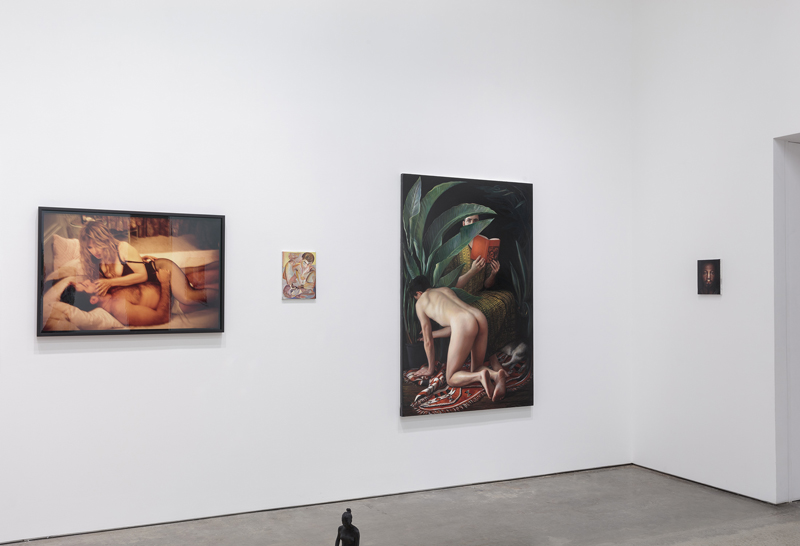
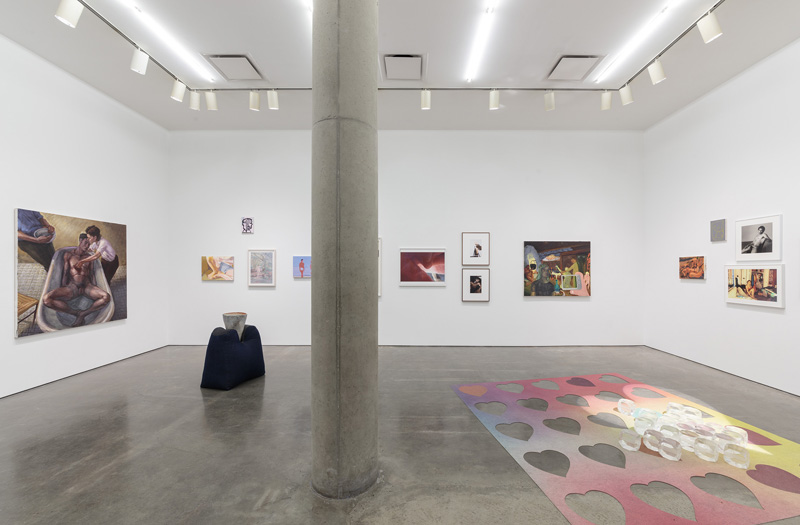
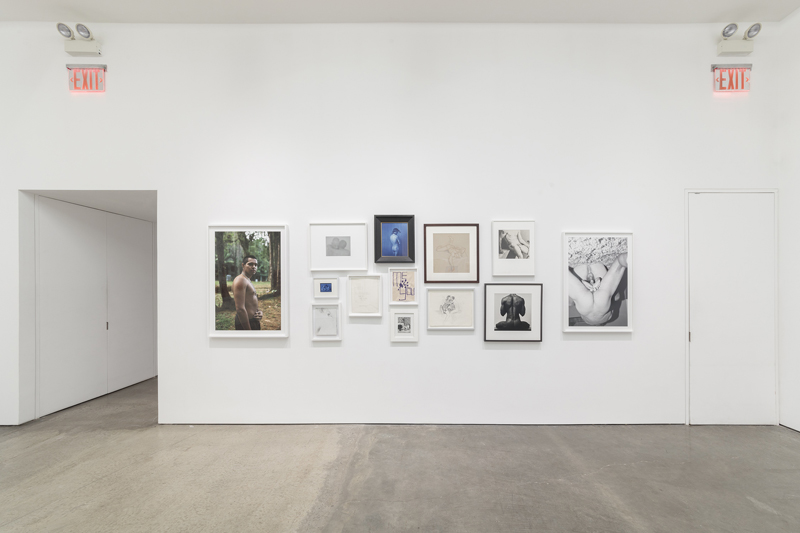
Intimacy, 2018, curated by Stephen Truax at Yossi Milo Gallery, New York.
Installation view © Yossi Milo Gallery, New York.
The exhibition was reviewed in Hyperallergic, The Brooklyn Rail Dazed, and Garage/Vice. It was previewed in ArtNet, ArtNews, and The New York Post.
Yossi Milo Gallery is pleased to present more than seventy artworks in Intimacy, curated by Stephen Truax. The exhibition traces the presentation of intimate relationships over the course of forty years in painting, photography, sculpture, installation, and works on paper.
Intimacy focuses on the 1980s through the early 1990s, and the present decade, two key timeframes marked by dramatic social change: The former by the tragedy of the AIDS crisis, the latter by increasing public acceptance of LGBTQ-identified communities and medical advances in the fight against HIV/AIDS. In these two periods, the exhibition links disparate formal and conceptual approaches to themes of love, loss, and interrelation. From Paul Cadmus' drawing from the late 1970s, to works made for this exhibition, such as Kristen Jensen's site-specific ceramic and fabric sculpture, these works celebrate the seemingly unremarkable moments of everyday lives lived together.
Intimacy proposes that this group of nearly forty artists from both time periods turn inward to personal experience and to the expression of individual identity as a political gesture. Exploring complex relationships -- sex, sexuality, and the body -- and how those relationships are necessarily affected by intersectional identities, the artists are from widely diverse backgrounds across race, gender identity, age, sexual orientation and nationality.
While a rise in activist and protest art was evident in the late 1980s through the early 1990s, when artists addressed head on the AIDS epidemic and themes of identity politics the crises provoked, an emergence of quiet, intimate bodies of work, often depicting domestic settings, also rose in prominence. These more private subjects are featured in this exhibition.
Photographs from this period by Peter Hujar, Nan Goldin and David Wojnarowicz reflect their autobiographical experiences. Portraits by George Dureau and Robert Mapplethorpe expose the personal relationships each shared with his models off-camera. Jack Pierson and Lyle Ashton Harris elaborated on this strategy, making work just as probing and personal about their lives, loves, and queer experiences. These artists became key figures, inspiring the younger artists in this exhibition.
Figurative painters Patrick Angus and Hugh Steers, both active in New York in the 1980s-early 90s, dealt with overtly queer, domestic imagery; both succumbed to AIDS-related illness. Rob Stuart, whose portrait Angus painted in Stuart's own bedroom, wrote touchingly in his 1990 poem, "I sit for Patrick Angus": "To be undressed. To be sitting for a man / I loved. I was happy for this." In Steers' painting, Two Men and a Woman, 1992, a woman washes a naked man suffering from AIDS while his partner looks on, capturing the agony of watching a loved one pass away. Both painters, though underrepresented during their short lifetimes, made work that became instrumental in queer figurative painting today.
As Angus and Steers were in the twilight of their lives, Nicole Eisenman was just emerging from art school. It was the groundbreaking work of artists like Eisenman who spearheaded a return to figurative painting in the current decade. Her explicit images depicting figures of indeterminate gender engaged in emotional and sexual relationships, as in Lindsay's, 2016, on view in the show, paved the way for other young contemporary painters. It is on this trajectory that we locate the work of artists like Katherine Bradford, TM Davy, Louis Fratino, Samantha Nye, and Michael Stamm.
Parallel to the return to figurative painting, queer photography by artists like Wolfgang Tillmans and Katy Grannan emerged in the 1990s and 2000s. Both artists have created bodies of work that are bracingly intimate, and rely on the artists' personal relationships; more than this, they create relationships with their subjects for the viewer. They serve as touchstones (and even teachers) for the work of a generation of younger photographers like Elliott Jerome Brown Jr., Kia LaBeija, Elle Pérez, Bryson Rand, and Paul Mpagi Sepuya.
Not all of the works in the exhibition are set in domestic space; many works depict men gathering together in urban parks and forests, as we see in the 1979 infrared photographs of Kohei Yoshiyuki. Similarly, new works by young painters Elijah Burgher, Sholem Krishtalka and Doron Langberg, all point to a special kind of intimacy gay men can find cruising together in the woods.
Other works in the show move beyond the strictly figurative and representational. Stephen Irwin, Christopher K. Ho and Kristina Matousch also address domesticity, but from a conceptual distance. Toward the end of his life, Irwin, who also died of AIDS-related illness, made exquisite images of loving embraces by rubbing out, or painting on appropriated pulp pornography. Ho offers Dear John, 2017, a large-scale laser-cut carpet installation decorated with heart emojis that support a cluster of 3-D printed glass blocks etched with a portrait of a young man; nearby, a small statue of a woman staring forlornly at her smartphone, perhaps reading a contemporary "Dear John" letter. Swedish artist Kristina Matousch's steel plates bear the marks of a typical domestic stovetop that was turned on, a deceptively simple gesture that is both violent and suggestive of caring for another in the home.
EJ Hauser, Jesse Wine, and Kristen Jensen create unique symbolic languages that point to relationships. Hauser inscribes ME + YOU, and YOURS into her paintings and drawings. Jesse Wine's tableau, Well, there's no accounting for taste is there, 2017, suggests a couple in repose on a sofa. Kristen Jensen designs her soft denim sculptures to support and protect a ceramic object in a kind of physical, bodily embrace. These abstract presentations of relationships -- between the artist and subject, artist and viewer, and between objects in a single work -- add to the diverse approaches to portraying intimacy in artwork being produced today.
Intimacy connects two specific art historical moments in which artists turn inward to their own lives and their intimate relationships as their subject. Just as artists did in the 1970s, and increasingly during the '80s and '90s, artists today plumb their life experience for their subject matter, and present it transparently. Their work is romantic, beautiful, and intended to emotionally move the viewer. This approach has been taken to surprising conclusions in the most recent works in the show. The exhibition also organizes an informal queer history, ending with a younger generation of LGBTQ-identified artists who can, unlike so many before, enjoy having older, queer mentors: those who survived.
Intimacy focuses on the 1980s through the early 1990s, and the present decade, two key timeframes marked by dramatic social change: The former by the tragedy of the AIDS crisis, the latter by increasing public acceptance of LGBTQ-identified communities and medical advances in the fight against HIV/AIDS. In these two periods, the exhibition links disparate formal and conceptual approaches to themes of love, loss, and interrelation. From Paul Cadmus' drawing from the late 1970s, to works made for this exhibition, such as Kristen Jensen's site-specific ceramic and fabric sculpture, these works celebrate the seemingly unremarkable moments of everyday lives lived together.
Intimacy proposes that this group of nearly forty artists from both time periods turn inward to personal experience and to the expression of individual identity as a political gesture. Exploring complex relationships -- sex, sexuality, and the body -- and how those relationships are necessarily affected by intersectional identities, the artists are from widely diverse backgrounds across race, gender identity, age, sexual orientation and nationality.
While a rise in activist and protest art was evident in the late 1980s through the early 1990s, when artists addressed head on the AIDS epidemic and themes of identity politics the crises provoked, an emergence of quiet, intimate bodies of work, often depicting domestic settings, also rose in prominence. These more private subjects are featured in this exhibition.
Photographs from this period by Peter Hujar, Nan Goldin and David Wojnarowicz reflect their autobiographical experiences. Portraits by George Dureau and Robert Mapplethorpe expose the personal relationships each shared with his models off-camera. Jack Pierson and Lyle Ashton Harris elaborated on this strategy, making work just as probing and personal about their lives, loves, and queer experiences. These artists became key figures, inspiring the younger artists in this exhibition.
Figurative painters Patrick Angus and Hugh Steers, both active in New York in the 1980s-early 90s, dealt with overtly queer, domestic imagery; both succumbed to AIDS-related illness. Rob Stuart, whose portrait Angus painted in Stuart's own bedroom, wrote touchingly in his 1990 poem, "I sit for Patrick Angus": "To be undressed. To be sitting for a man / I loved. I was happy for this." In Steers' painting, Two Men and a Woman, 1992, a woman washes a naked man suffering from AIDS while his partner looks on, capturing the agony of watching a loved one pass away. Both painters, though underrepresented during their short lifetimes, made work that became instrumental in queer figurative painting today.
As Angus and Steers were in the twilight of their lives, Nicole Eisenman was just emerging from art school. It was the groundbreaking work of artists like Eisenman who spearheaded a return to figurative painting in the current decade. Her explicit images depicting figures of indeterminate gender engaged in emotional and sexual relationships, as in Lindsay's, 2016, on view in the show, paved the way for other young contemporary painters. It is on this trajectory that we locate the work of artists like Katherine Bradford, TM Davy, Louis Fratino, Samantha Nye, and Michael Stamm.
Parallel to the return to figurative painting, queer photography by artists like Wolfgang Tillmans and Katy Grannan emerged in the 1990s and 2000s. Both artists have created bodies of work that are bracingly intimate, and rely on the artists' personal relationships; more than this, they create relationships with their subjects for the viewer. They serve as touchstones (and even teachers) for the work of a generation of younger photographers like Elliott Jerome Brown Jr., Kia LaBeija, Elle Pérez, Bryson Rand, and Paul Mpagi Sepuya.
Not all of the works in the exhibition are set in domestic space; many works depict men gathering together in urban parks and forests, as we see in the 1979 infrared photographs of Kohei Yoshiyuki. Similarly, new works by young painters Elijah Burgher, Sholem Krishtalka and Doron Langberg, all point to a special kind of intimacy gay men can find cruising together in the woods.
Other works in the show move beyond the strictly figurative and representational. Stephen Irwin, Christopher K. Ho and Kristina Matousch also address domesticity, but from a conceptual distance. Toward the end of his life, Irwin, who also died of AIDS-related illness, made exquisite images of loving embraces by rubbing out, or painting on appropriated pulp pornography. Ho offers Dear John, 2017, a large-scale laser-cut carpet installation decorated with heart emojis that support a cluster of 3-D printed glass blocks etched with a portrait of a young man; nearby, a small statue of a woman staring forlornly at her smartphone, perhaps reading a contemporary "Dear John" letter. Swedish artist Kristina Matousch's steel plates bear the marks of a typical domestic stovetop that was turned on, a deceptively simple gesture that is both violent and suggestive of caring for another in the home.
EJ Hauser, Jesse Wine, and Kristen Jensen create unique symbolic languages that point to relationships. Hauser inscribes ME + YOU, and YOURS into her paintings and drawings. Jesse Wine's tableau, Well, there's no accounting for taste is there, 2017, suggests a couple in repose on a sofa. Kristen Jensen designs her soft denim sculptures to support and protect a ceramic object in a kind of physical, bodily embrace. These abstract presentations of relationships -- between the artist and subject, artist and viewer, and between objects in a single work -- add to the diverse approaches to portraying intimacy in artwork being produced today.
Intimacy connects two specific art historical moments in which artists turn inward to their own lives and their intimate relationships as their subject. Just as artists did in the 1970s, and increasingly during the '80s and '90s, artists today plumb their life experience for their subject matter, and present it transparently. Their work is romantic, beautiful, and intended to emotionally move the viewer. This approach has been taken to surprising conclusions in the most recent works in the show. The exhibition also organizes an informal queer history, ending with a younger generation of LGBTQ-identified artists who can, unlike so many before, enjoy having older, queer mentors: those who survived.
An essay on contemporary figurative painting, "Why Young Queer Artists are Trading Anguish for Joy," with interviews and studio visits with TM Davy, Louis Fratino, Celeste Dupuy-Spencer, Sholem Krishtalka, Doron Langberg, Sam McKinniss, and Michael Stamm, commissioned by Artsy. (November 2017).
A review of Martin Boyce, Sleeping Chimneys. Dead Stars. at Tanya Bonakdar, New York, in The Brooklyn Rail. (June 2017).
A review of Stephen Irwin, Check to see if still dead inside., at Invisible Exports, New York, in The Brooklyn Rail. (May 2017).
A review of Sputterances, organized by Sanya Kantarovsky at Metro Pictures, New York, in The Brooklyn Rail. (April 2017).
A review of EJ Hauser, ME + YOU, at Regina Rex, New York, in The Brooklyn Rail (April 2017).
How Will I Know, curated by Dr. Anne Luther, at 67 Ludlow, New York, was reviewed in ArtPulse magazine, Miami, by Terence Trouillot. (March 2017)
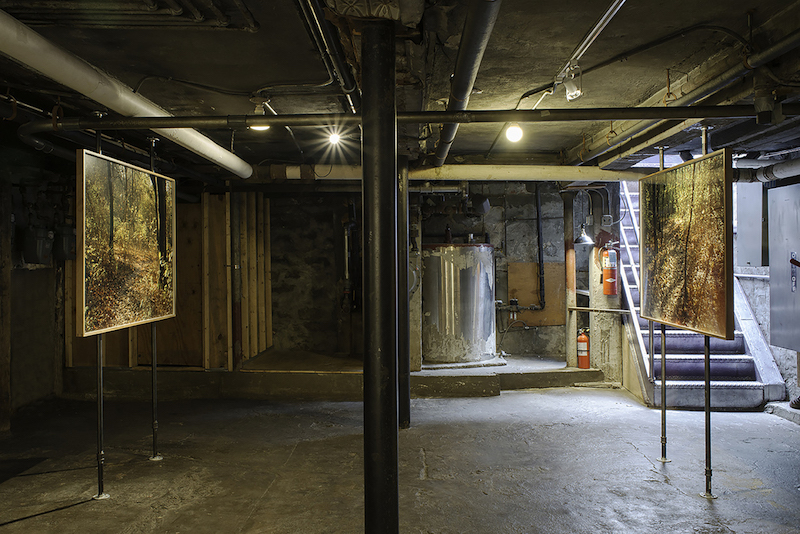
Installation view: How Will I Know, curated by Anne Luther, 2016, including Cruising Ground (Hasenheide) I, and Cruising Ground (Hasenheide) II, both 2015.
A review of TM Davy, Horses at 11R, New York, in The Brooklyn Rail (February 2017).
How Will I Know (October 2016), an exhibition of drawings, photographs, texts, and a sound work, curated by Dr. Anne Luther, at 67 Ludlow, in New York. The works construct a nonlinear narrative of the shared experience of three men. The exhibition ran from October 7 through October 29.
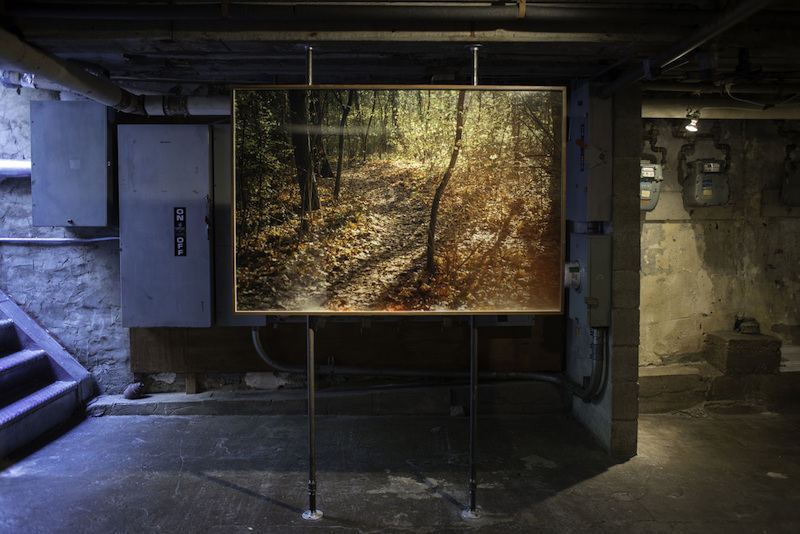
Stephen Truax, Cruising Ground (Hasenheide) I, 2015, C-print, 36 x 52 inches, framed, installed on steel piping
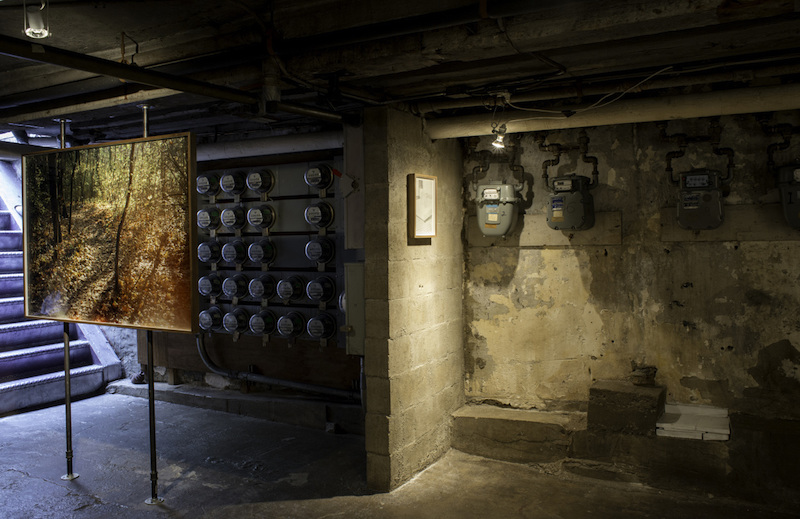
Installation view: How Will I Know, curated by Anne Luther, 2016.
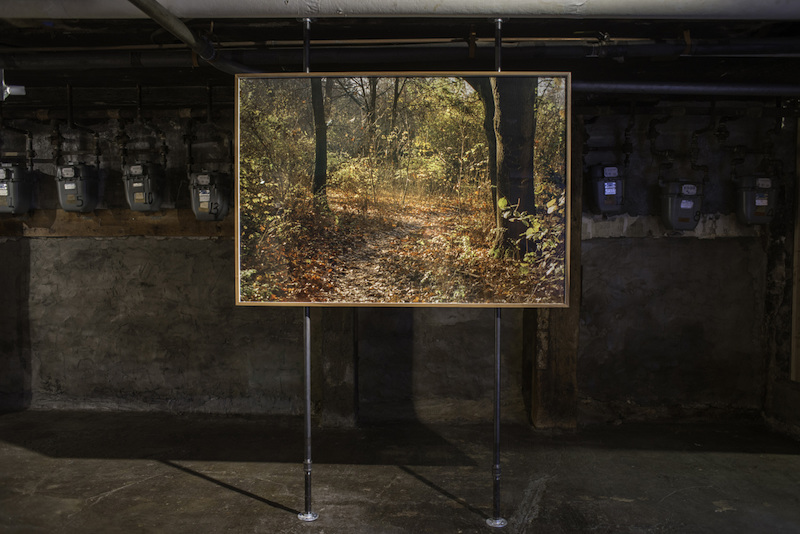
Stephen Truax, Cruising Ground (Hasenheide) II, 2015, C-print, 36 x 52 inches, framed, installed on steel piping
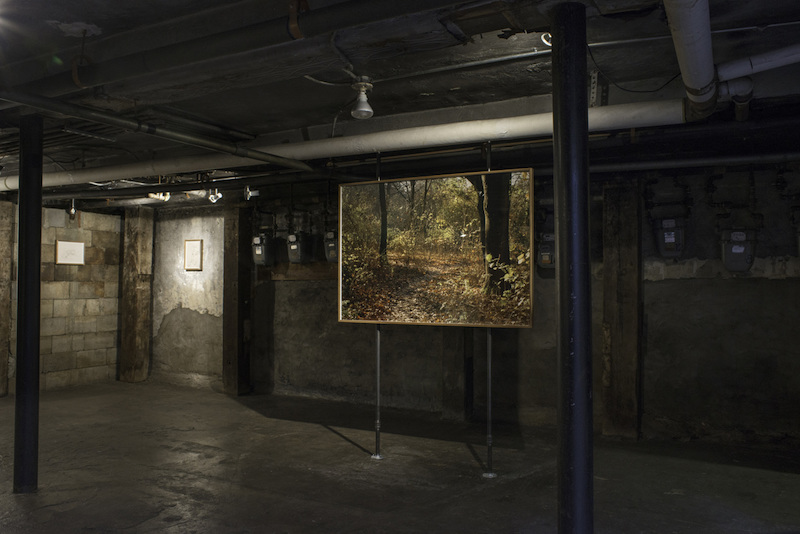
Installation view: How Will I Know, curated by Anne Luther, 2016.
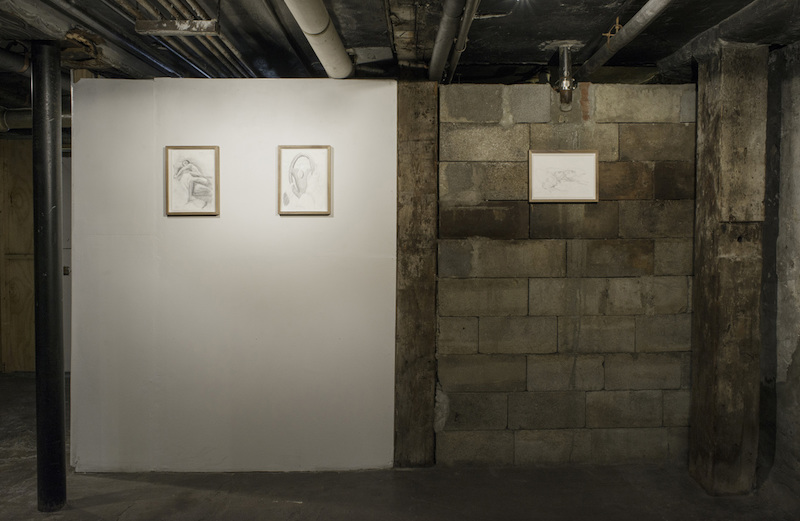
Installation view: How Will I Know, curated by Anne Luther, 2016.
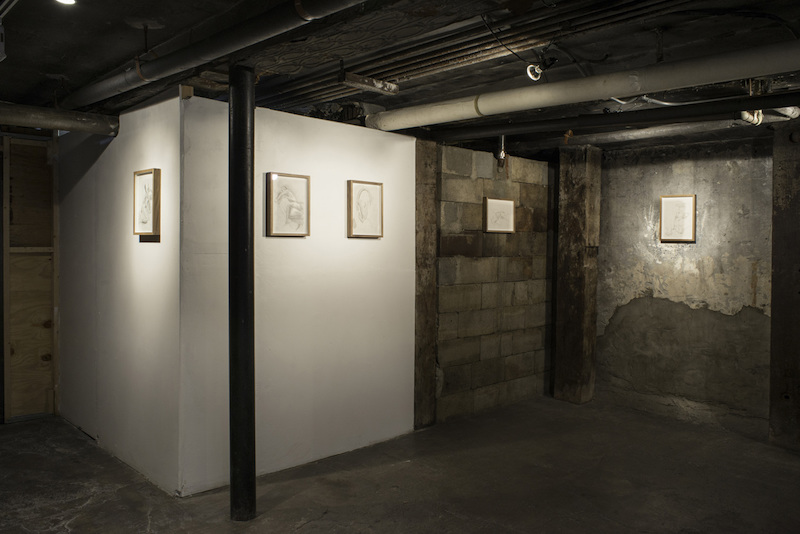
Installation view: How Will I Know, curated by Anne Luther, 2016.
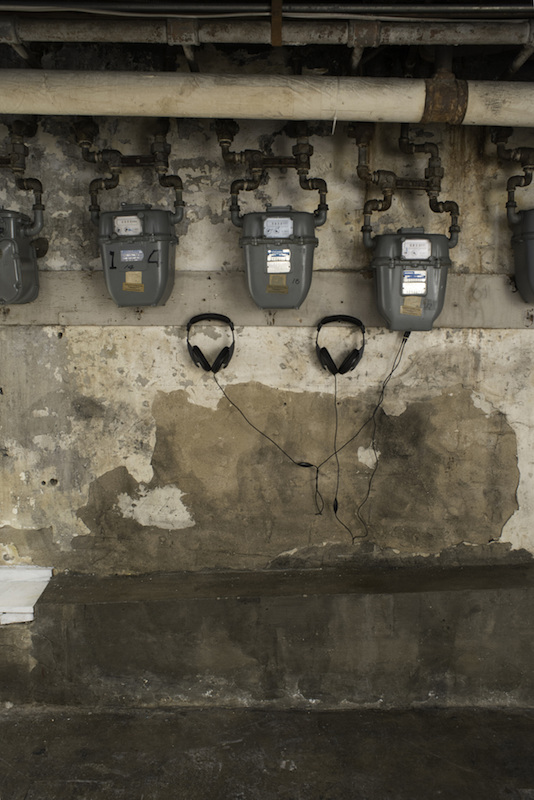
Stephen Truax, How Will I Know, 2016, sound installation on headphones, duration: 13 minutes
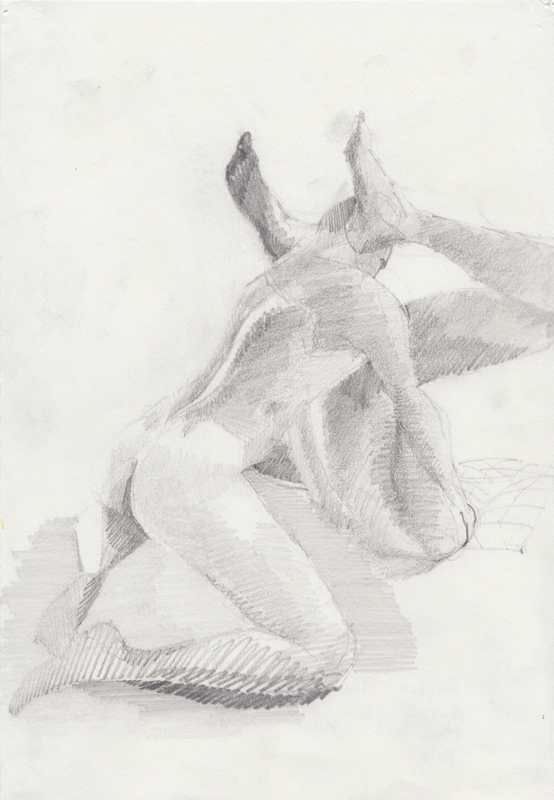
Stephen Truax, How Will I Know (Eating Ass), 2016, graphite on paper, 11 3/4 x 8 1/4 inches / 29.7 x 21.0 cm
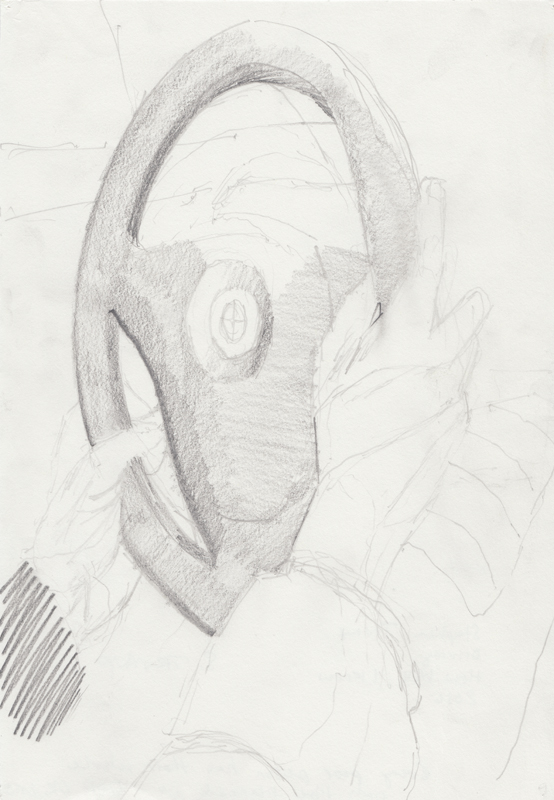
Stephen Truax, How Will I Know (Driving), 2016, graphite on paper, 11 3/4 x 8 1/4 inches / 29.7 x 21.0 cm
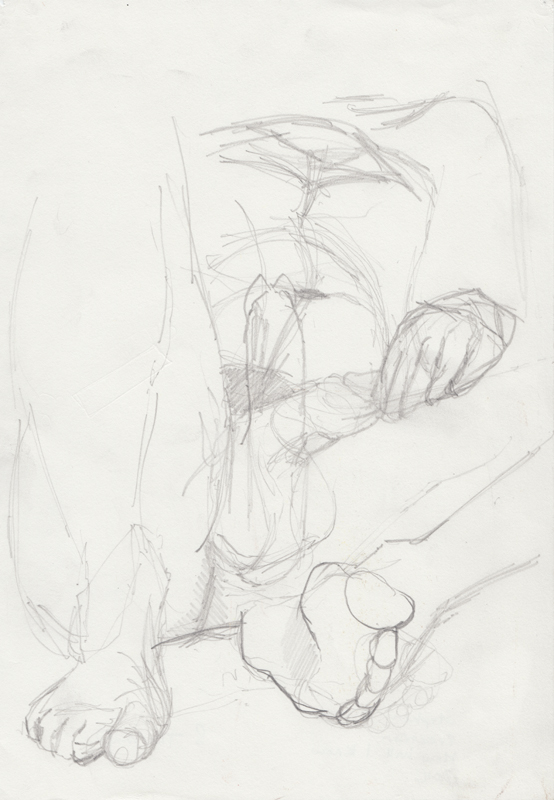
Stephen Truax, How Will I Know (Erection), 2016, graphite on paper, 11 3/4 x 8 1/4 inches / 29.7 x 21.0 cm
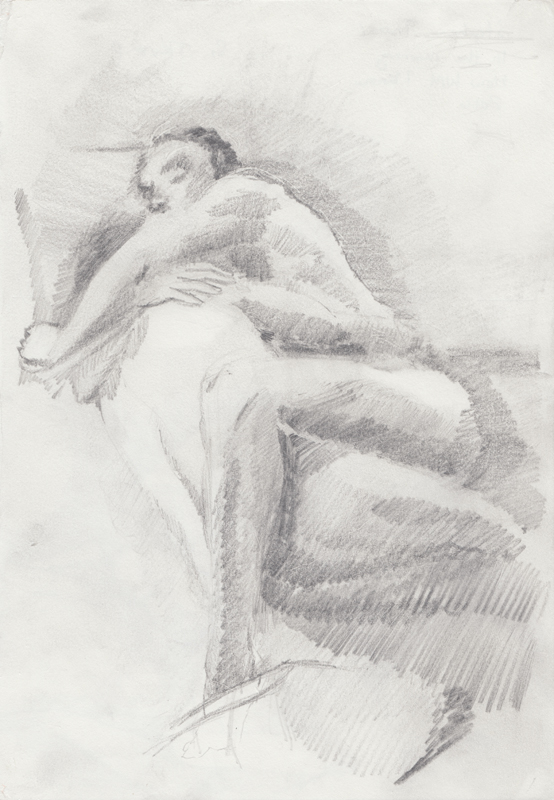
Stephen Truax, How Will I Know (In The Morning), 2016, graphite on paper, 11 3/4 x 8 1/4 inches / 29.7 x 21.0 cm
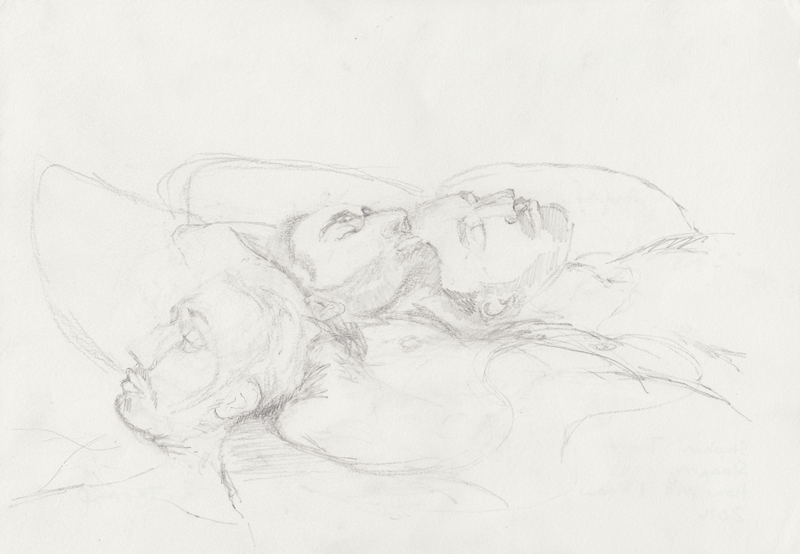
Stephen Truax, How Will I Know (Sleeping), 2016, graphite on paper, 11 3/4 x 8 1/4 inches / 29.7 x 21.0 cm
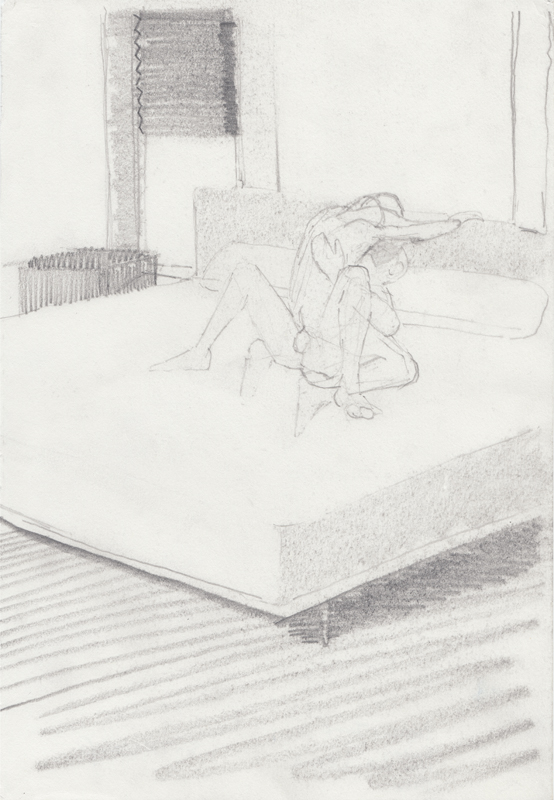
Stephen Truax, How Will I Know (Sunday), 2016, graphite on paper, 11 3/4 x 8 1/4 inches / 29.7 x 21.0 cm
Intimate drawings show the domestic involvement of a married couple with a third partner, whose observations become a record of their relationship. The subjects of the drawings, whether real or imagined, oscillate around the question suggested in the exhibition’s title. Truax presents this question in the multiple facets of the relationship and in every image and text: daily pre-exposure prophylaxis (PrEP) and antiretroviral medication, the invitation to the privileged life of his partners, and banal objects are examined from a position of hopeful doubt. The narrative fosters a sympathetic relationship between us and the observer.
This narrative is presented in contrast to two photographs that position us standing alone on a foot-worn path in Volkspark Hasenheide in Berlin. Not knowing of what could happen walking further, we are searching for the unknown in these photographs. The possibilities these photographs suggest are only available to gay men cruising for sex. Only the people who know exactly where this particular spot is can find it -- or would even look for it. The anonymity of the photographs, though taken in an public space, suggests an exclusivity in direct comparison to the illimitable openness of the domestic narratives.
In these works, we find ourselves in the cruising ground, in the bedroom, in the car, and thus implicated in the activities that go on there. How Will I Know proposes that personal life can be employed as a statement of continuing political urgency.
This narrative is presented in contrast to two photographs that position us standing alone on a foot-worn path in Volkspark Hasenheide in Berlin. Not knowing of what could happen walking further, we are searching for the unknown in these photographs. The possibilities these photographs suggest are only available to gay men cruising for sex. Only the people who know exactly where this particular spot is can find it -- or would even look for it. The anonymity of the photographs, though taken in an public space, suggests an exclusivity in direct comparison to the illimitable openness of the domestic narratives.
In these works, we find ourselves in the cruising ground, in the bedroom, in the car, and thus implicated in the activities that go on there. How Will I Know proposes that personal life can be employed as a statement of continuing political urgency.
A review of Nicole Eisenman's concurrent exhibitions at Anton Kern, New York, and Al-ugh-ories, at the New Museum, New York, in The Brooklyn Rail (July/August 2016).
A review of Raoul De Keyser's posthumous exhibition, Drift, 2016, at David Zwirner, New York, in The Brooklyn Rail (May 2016).
Super Sketchy, an exhibition of drawings organized by Alleyoop Projects at DCTV in New York (April 2016). Triad, 2016, is part of the series, How Will I Know, 2015-2016, which are erotic and intimate drawings of and about gay men.
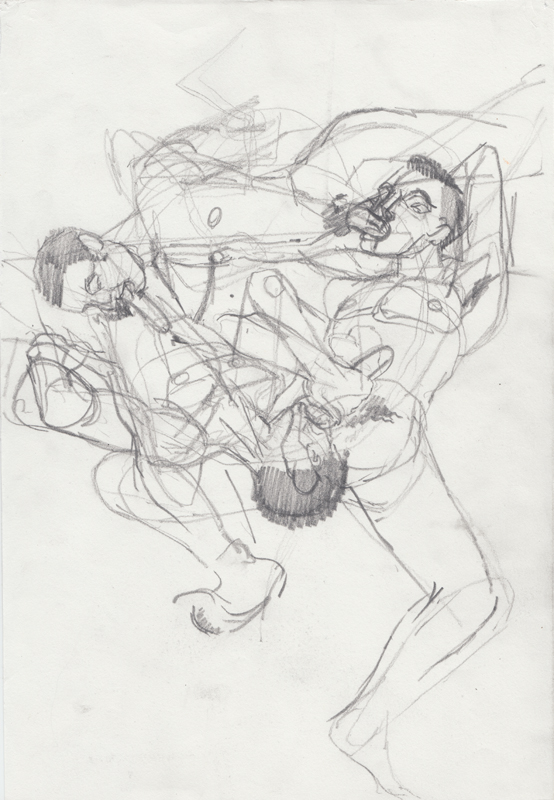
Stephen Truax, Triad, 2016, Graphite on paper, 11 3/4 x 8 1/4 inches / 29.7 x 21.0 cm
A review of John Walker's exhibition, Looking Out to Sea, at Alexandre Gallery, New York, in The Brooklyn Rail (February 2016).
“Golden Age,” a book presentation and panel discussion with Marco Antonini and Christopher K. Ho, at the Savannah College of Art and Design, Savannah, GA, (April 2015), Tapp’s Art Center, Columbia, SC (April 2015), and TSA New York (March 2015).
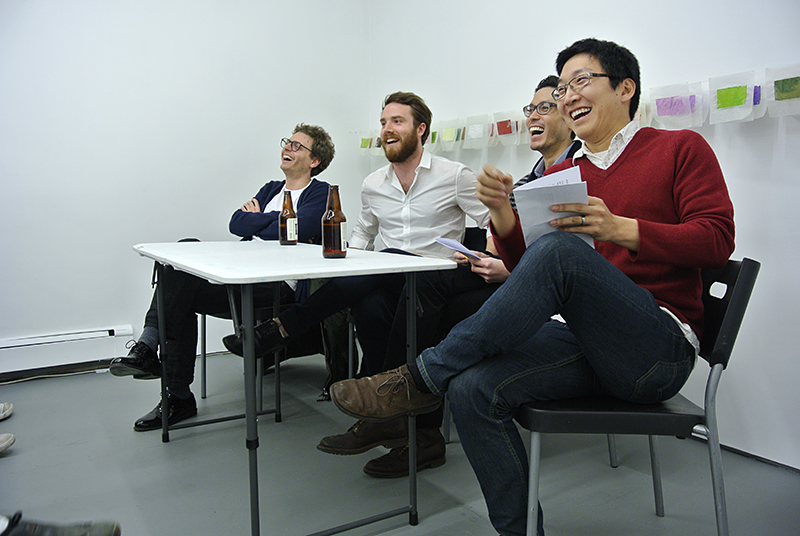
“Golden Age,” panel discussion with Marco Antonini, Christopher K. Ho, and Stephen Truax, moderated by Alex Paik at TSA New York.
Photo courtesy NURTUREart, New York.
Photo courtesy NURTUREart, New York.
Texts on Lois Dodd, Tamara Gonzales, Ronnie Landfield, and John Walker, commissioned for the online catalog Come Together: Surviving Sandy, edited by Thyrza Goodeve, published by The Brooklyn Rail (November 2014).
Interview on contemporary painting strategies in New York with Ariel Dill, Lauren Portada, and Marco Antonini, with illustrations of paintings, for The Golden Age: Perspectives on Abstract Painting Today, edited by Marco Antonini and Christopher K. Ho, published by NURTUREart, New York (October, 2014).
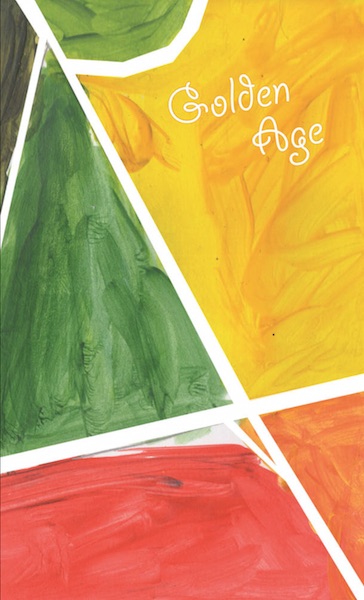
The Golden Age, edited by Marco Antonini and Christopher K. Ho (NURTUREart, New York: October 2014)
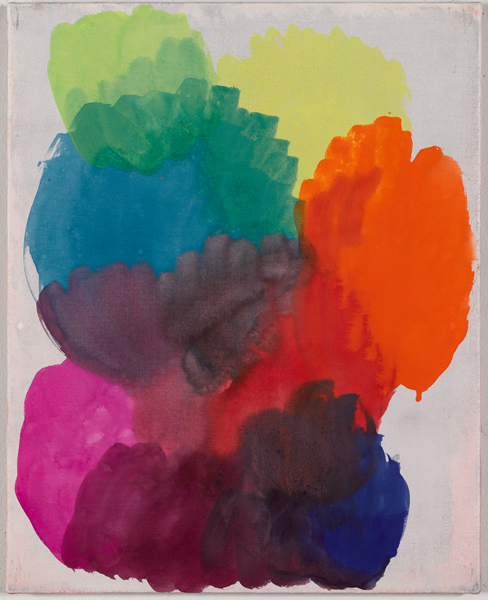
Stephen Truax, Sunday Painter (Palette Painting), 2013, Gouache, acrylic on canvas, 20 x 16 in / 76.2 x 116.84 cm
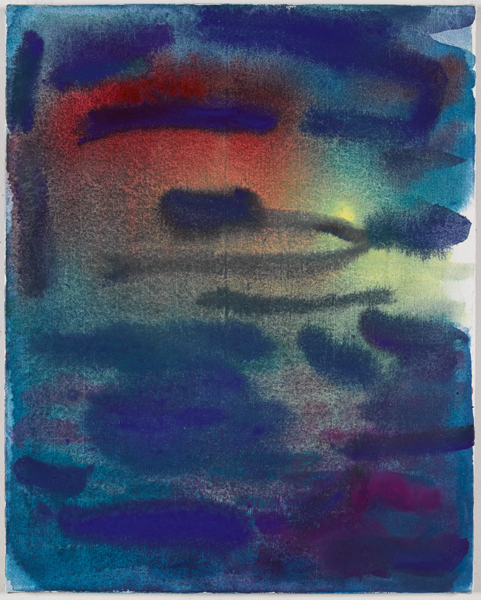
Stephen Truax, Sunday Painter (Sunset Painting Blue), 2013, Gouache, acrylic on canvas, 20 x 16 in / 76.2 x 116.84 cm
Half Drop, organized by Meredith Nemirov, at Telluride Arts 81435 Gallery, with Vince Contarino, Gabrielle D’Angelo, Christopher K. Ho, Benny Merris, Meghan Petras, and Craig Taylor (September 2014).
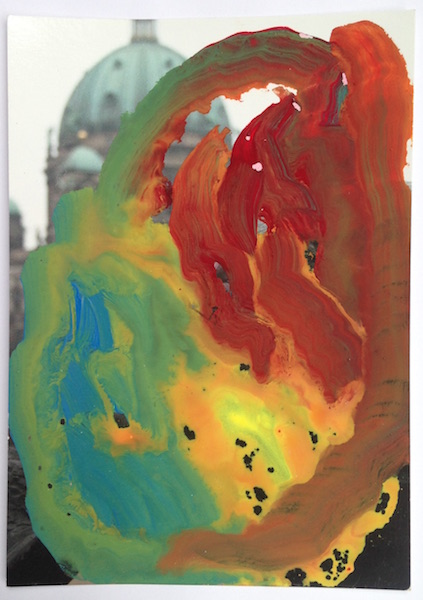
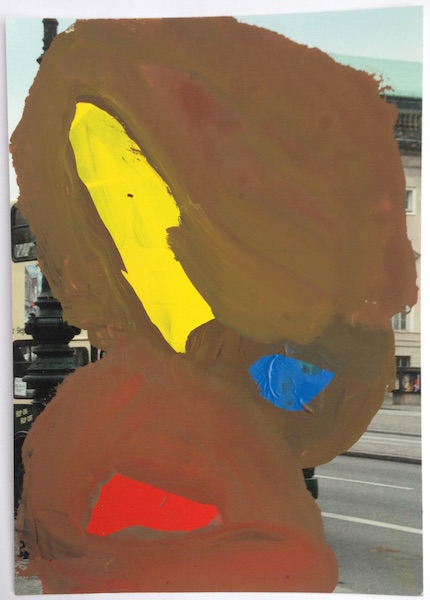
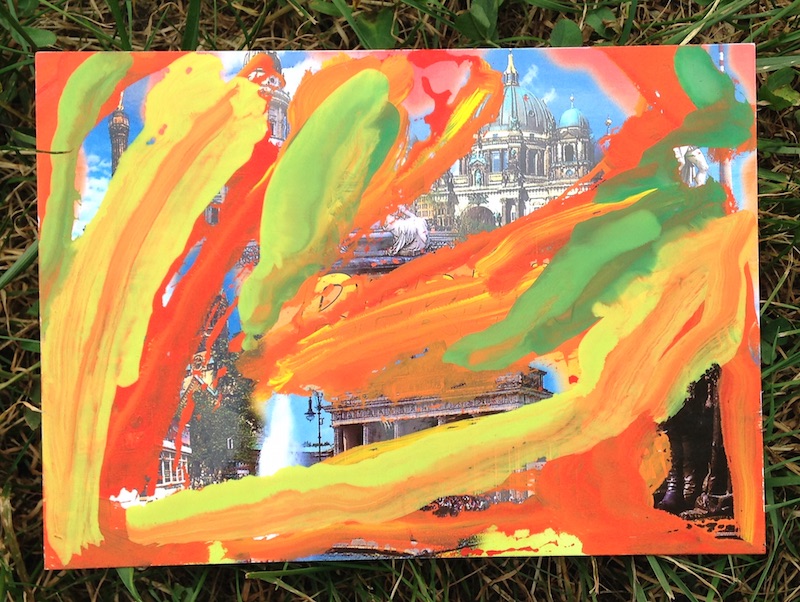
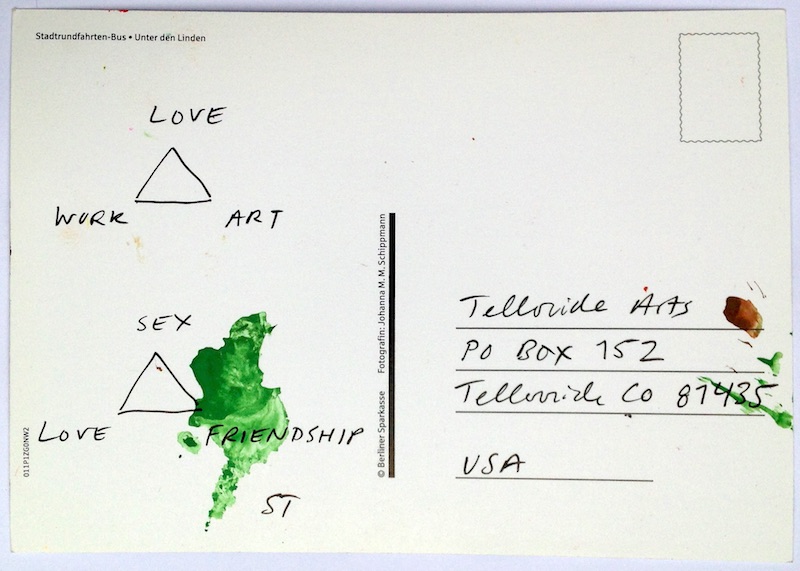
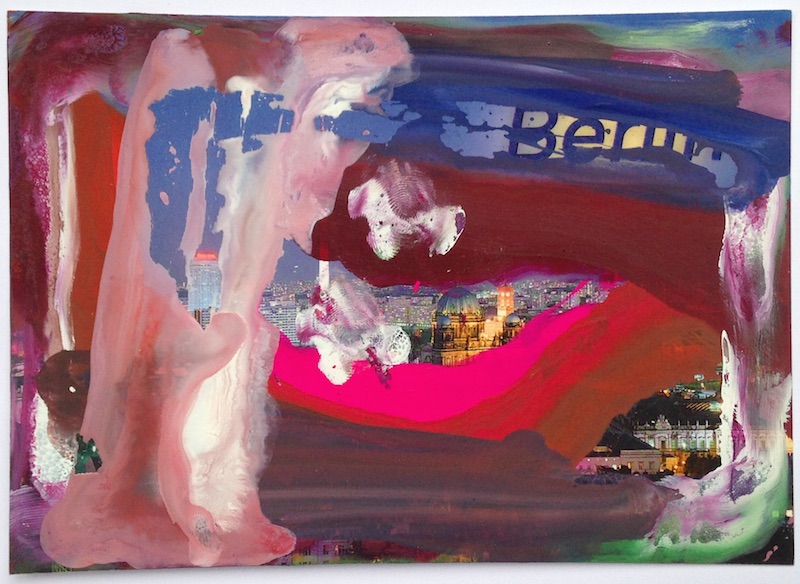
Stephen Truax, Postcards from Berlin, 2014, Gouache and pen on postcard, 4.2 x 5.9 in / 10.6 x 15 cm
[CATALOG]
